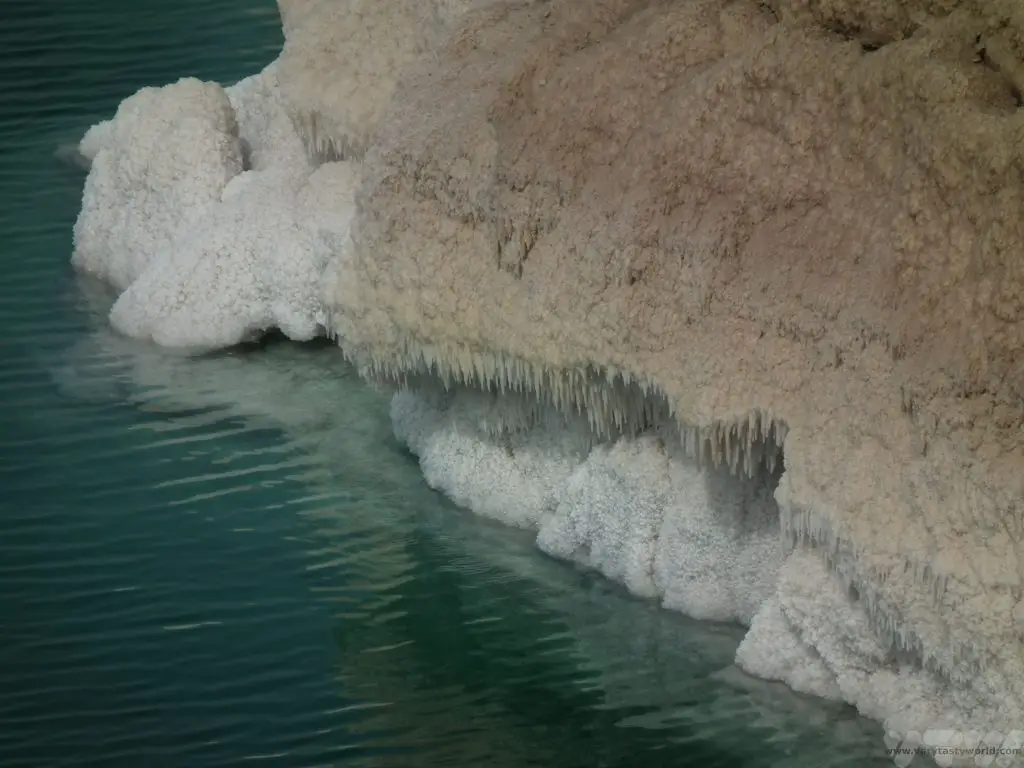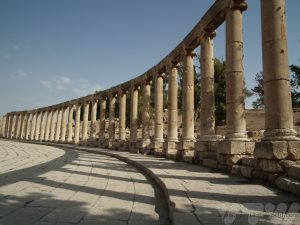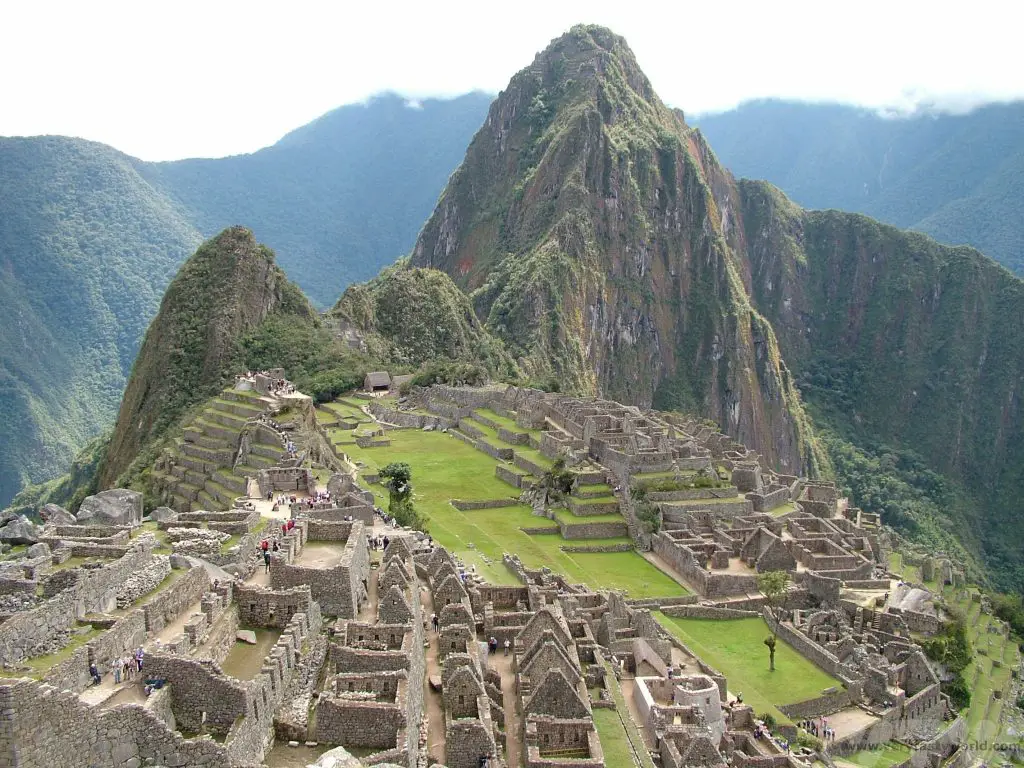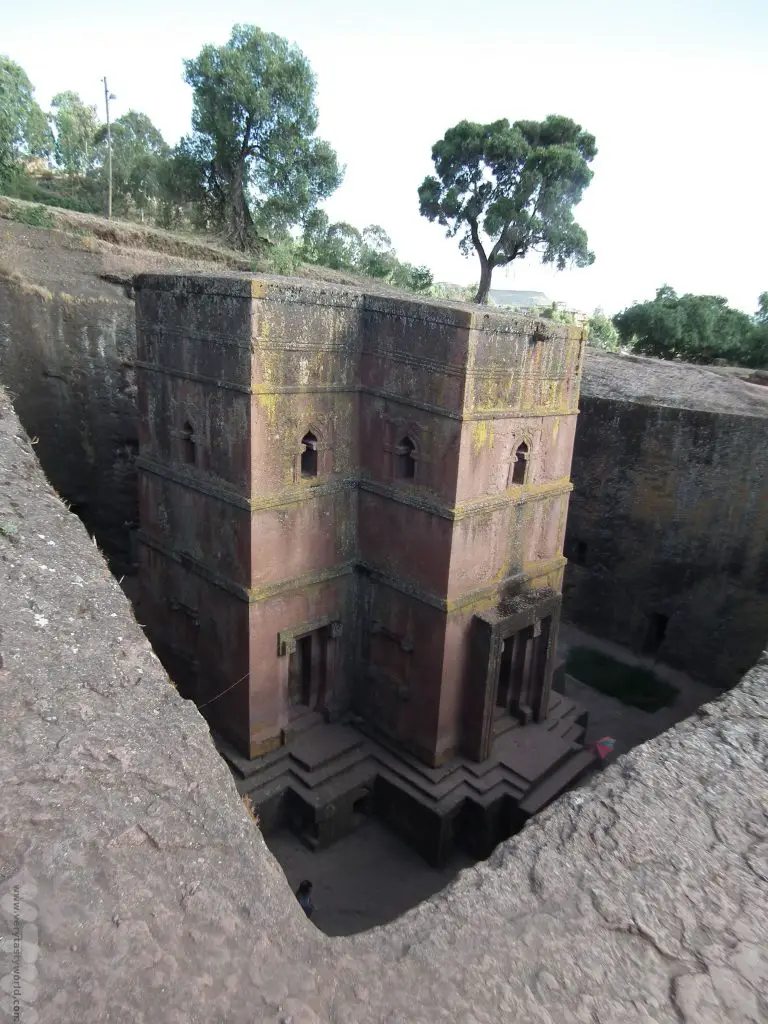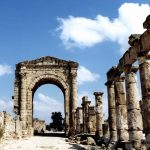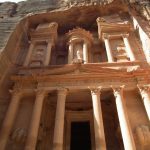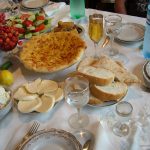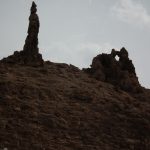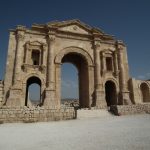Home » Posts tagged 'Naboteans'
Tag Archives: Naboteans
Visit Petra in Jordan
The Rose Red City
There are many magnificent archaeological sites in the world and the Rose Red City of Petra is undoubtedly one of the greatest. It had long been an ambition to visit and it was top of our list when exploring Jordan. Here is a guide to a visit to Petra.
The most famous image of Petra that of Al-Khazneh, The Treasury (the one you see in the film Indiana Jones and the Last Crusade) and we knew that we would walk through a dramatic canyon, known as As-Siq, to reach it. What we didn’t realise was quite how extensive the site is.
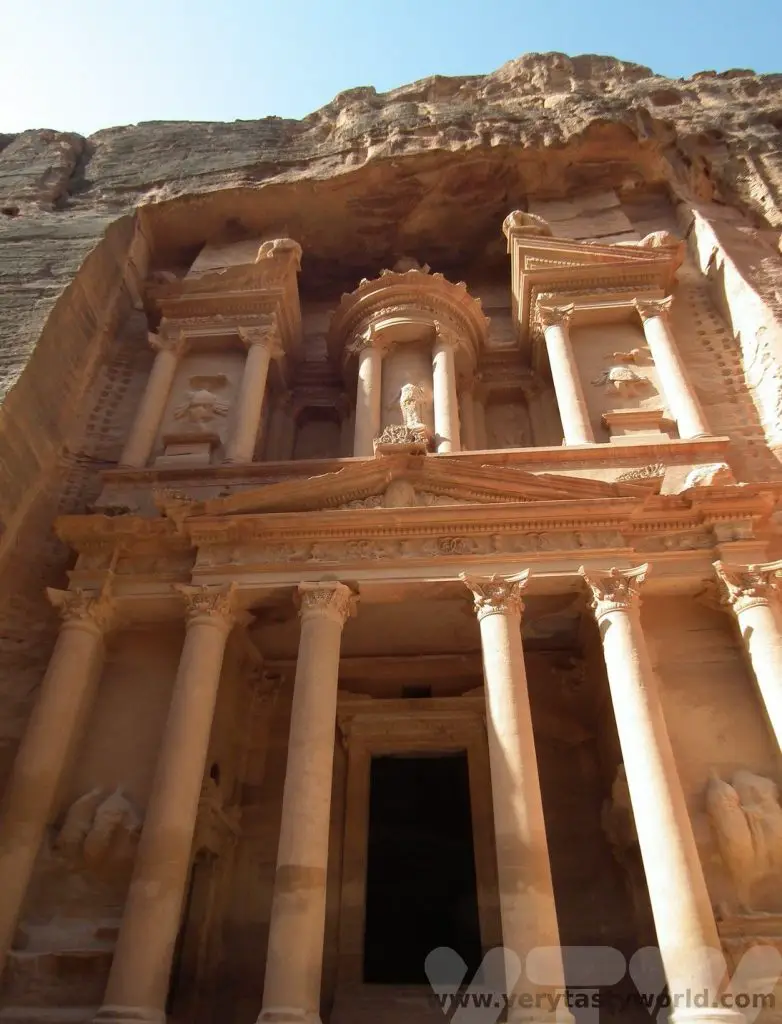
The History Of Petra
Petra was built by the Nabateans, an ancient Arab tribe, around the 1st Century BCE. The Nabateans were involved with caravaneering, trading in goods from all over the Middle East and Far East, and they became very wealthy protecting the region’s trade routes. Goods came from as far as China and India. What was fascinating about the Nabateans was that they were a clever, enlightened people. They believed in cultural inclusivity and appropriated technology from all over the world, absorbing influences from the places they traded with. You can see many different architectural styles throughout Petra.
In 106 CE the city was overtaken by the Romans who renamed it Arabia Petraea. The city did thrive under Roman rule for many years but its importance as a trade route declined as sea trading routes developed and became more important for transporting goods. It was significantly damaged by an earthquake in the 4th Century CE. It declined further during the Byzantine era and the city eventually was abandoned became ‘lost’ for centuries. It was re-discovered by explorer Johann Ludwig Burckhardt in 1812.
Visit Petra In Jordan – Practicalities
The site is located around 240km from Jordan’s capital city, Amman. The time it takes to reach the area does vary depending on the traffic, especially in Amman, which can be quite congested, but also the route you take. It’s around three hours by car on the modern desert highway or five hours on the King’s Highway. It is possible to do a day trip to Petra from Amman by bus, leaving early in the morning and returning in the evening, but the visit would be very rushed. It is also possible to reach the site using a hire car (the driving would be easy except in Amman where the roads are quite chaotic) or via a private tour – there are many options available.
We had travelled to Petra via Mount Nebo and the Dead Sea having spent some time in Amman, and after visiting the Roman city of Jerash.
You can’t stay in Petra itself (edit – that is, there are no hotels in Petra), but there is a town called Wadi Musa nearby. Our hotel was about a ten minute walk from the site entrance at Wadi Musa, which was a further kilometre away from the start of the Siq. Included in the ticket price is a horse ride to the Siq, which we declined. We don’t feel comfortable using animals when we are travelling as we can never be sure how they are treated, so avoided these. We prefer to walk anyway. Since we visited, an initiative has been established to use electric vehicles that will replace the horse-drawn carriages.
We had two full days to explore. We needed them. You cannot enter the site without purchasing a ticket at the visitor’s centre at Wadi Musa and we recommend finding a guide for at least part of your visit. We found the most delightful guide at the visitor’s centre who was with us the first morning; he showed us Petra’s main features and explained a lot of the history. We spent the rest of the time there exploring the site for ourselves. (This link will take you to current entrance fees and costs for guides.)
The Siq
Just before the entrance to the Siq you can see the Obelisk Tomb and the Bab as-Siq Triclinium.
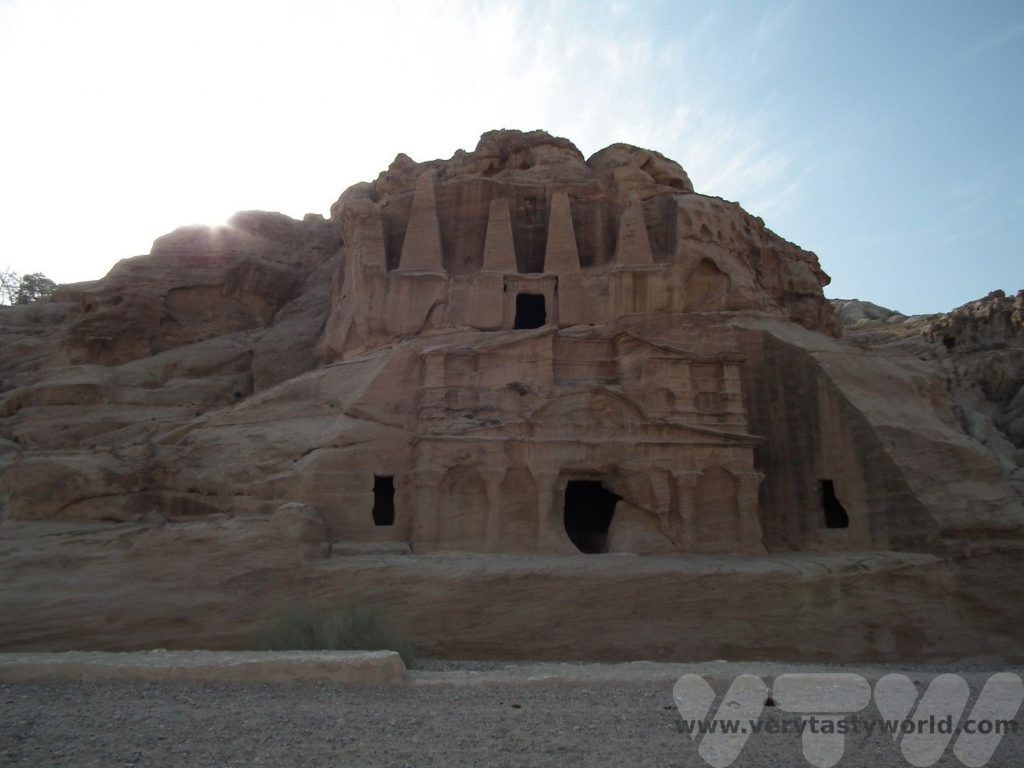
Then you enter the gorge itself. The Siq is about 1200 m long. It is deep (up to 80m in places), at times narrow, and stunningly beautiful. You can see all sorts of natural features, rock formations and fossils, as well as the remains of carvings showing caravans and camels.
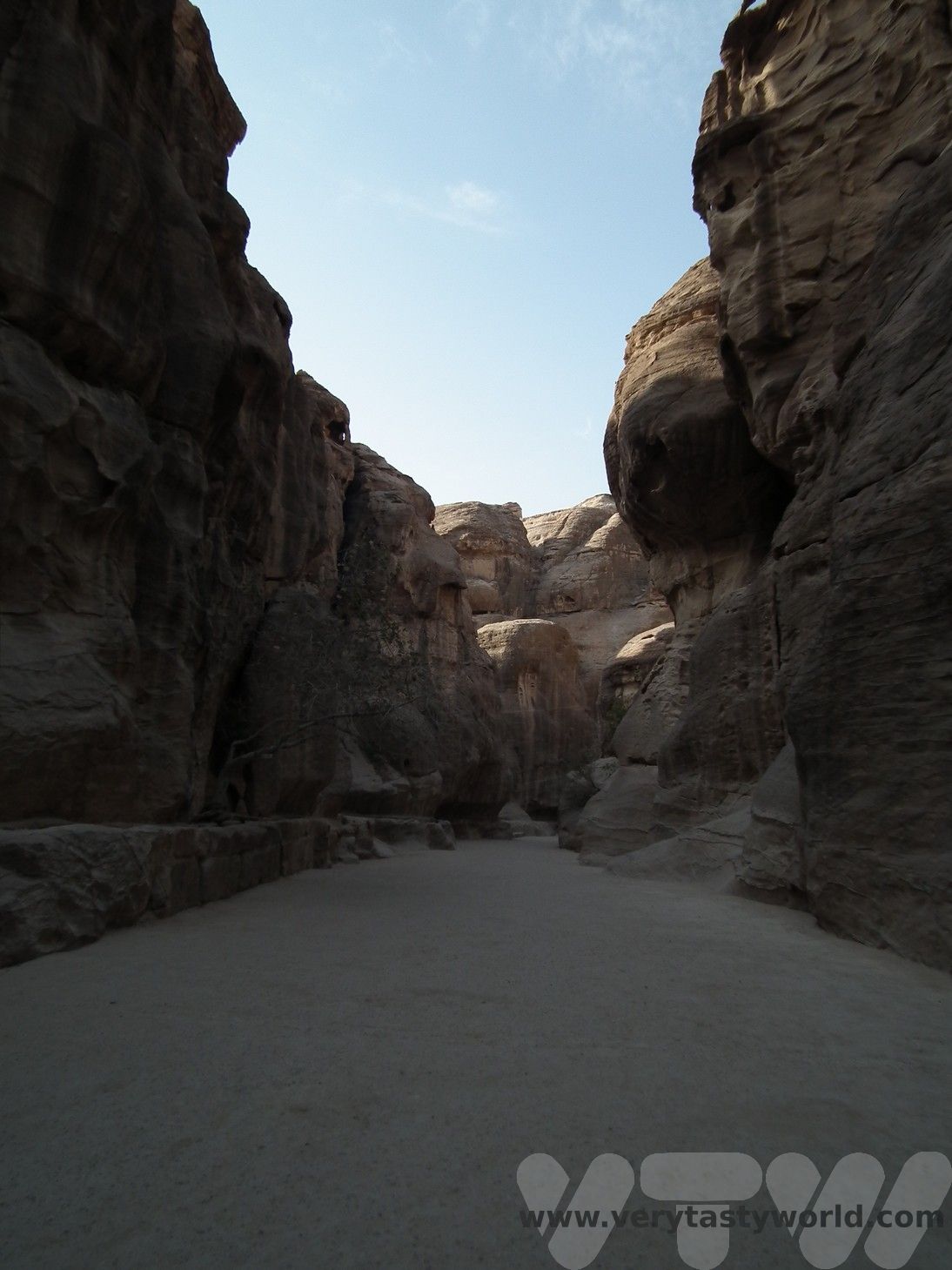
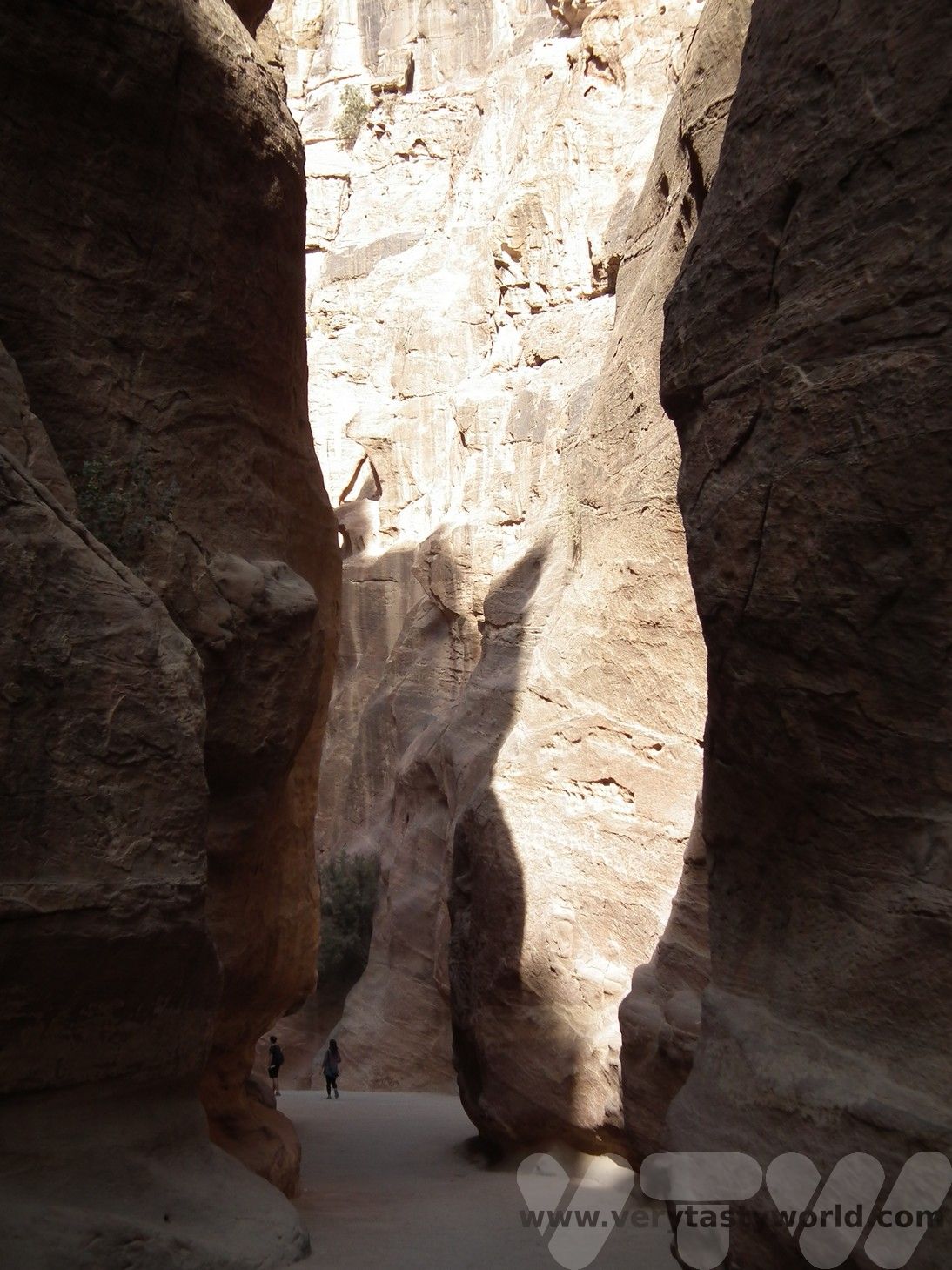
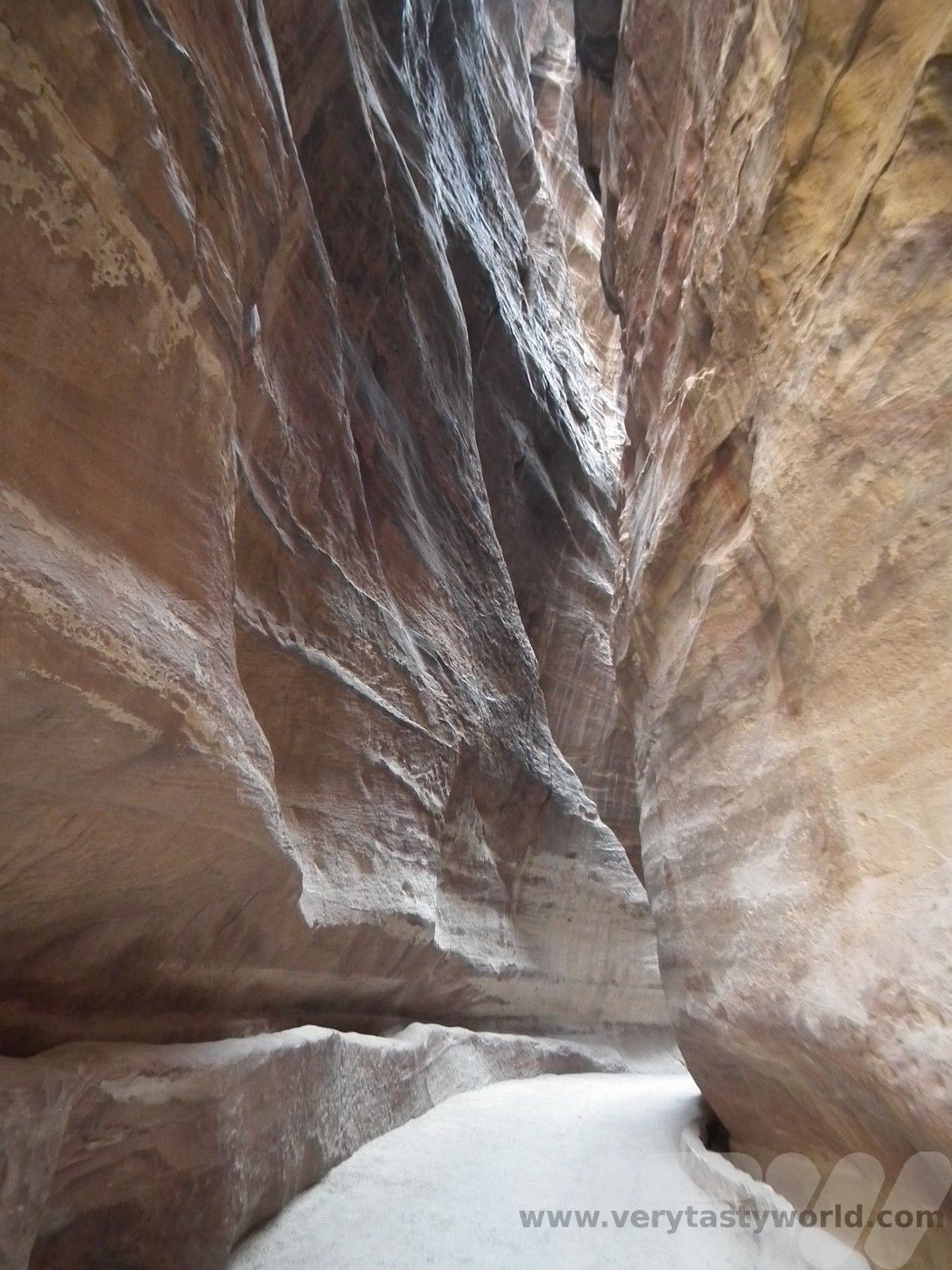
The photo shows drainage channels carved into the rock, inspired by Chinese bamboo irrigation channels, which carried water to Petra.
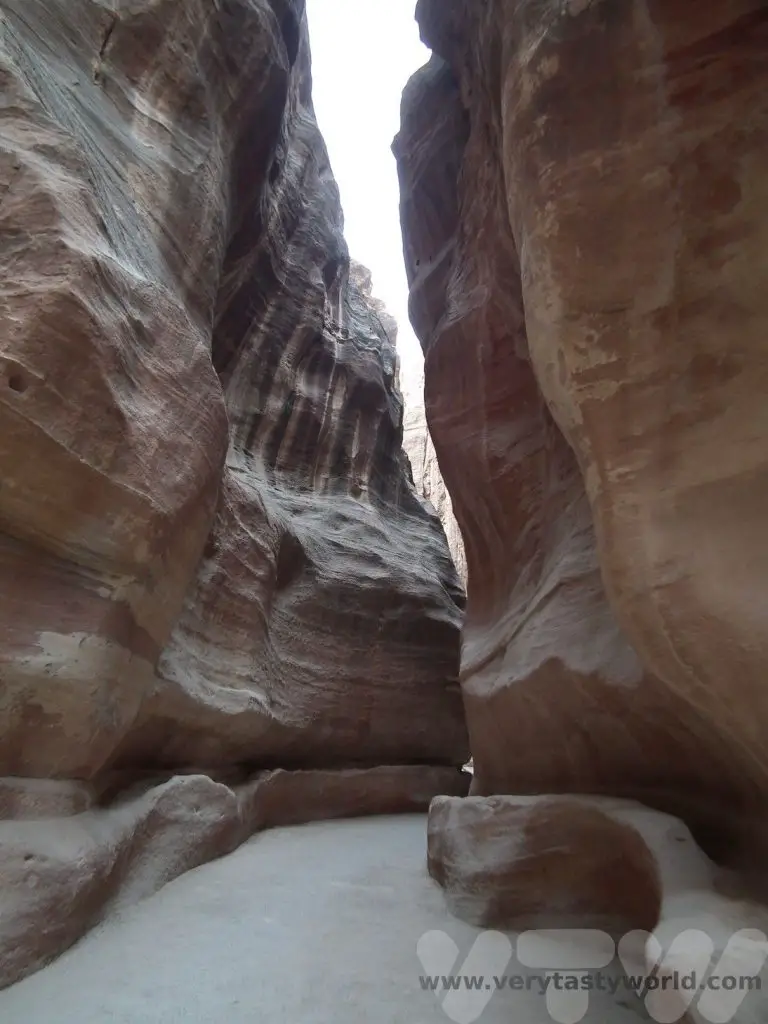
Then, at the end of the walk, you get a tantalising glimpse…
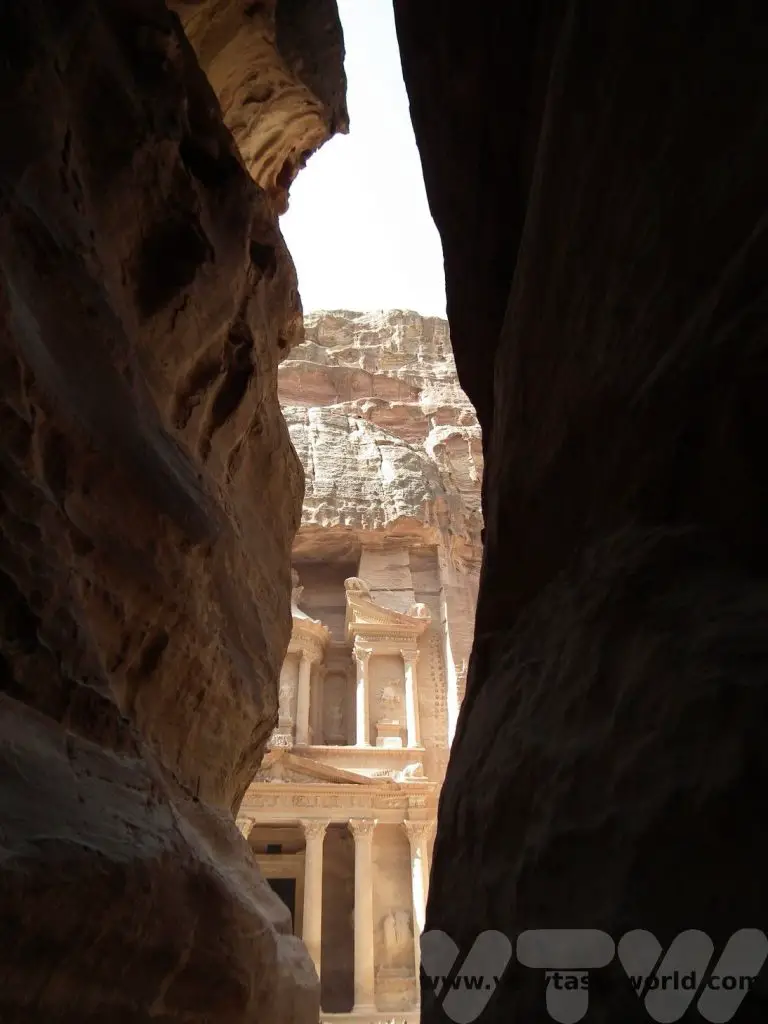
…of the Treasury, Al Khazneh. It’s actually a tomb of a 1st century Nabatean king. It’s about 30m wide and over 40m high. As with all the tombs at Petra, it was carved from the top down. (This process is similar to the amazing underground churches of Lalibela in Ethiopia.) You can see lots of indentations in the sandstone at the side of the structure. No-one is really sure about what they were for, but they could have been used by the craftsmen and masons for climbing to the top.
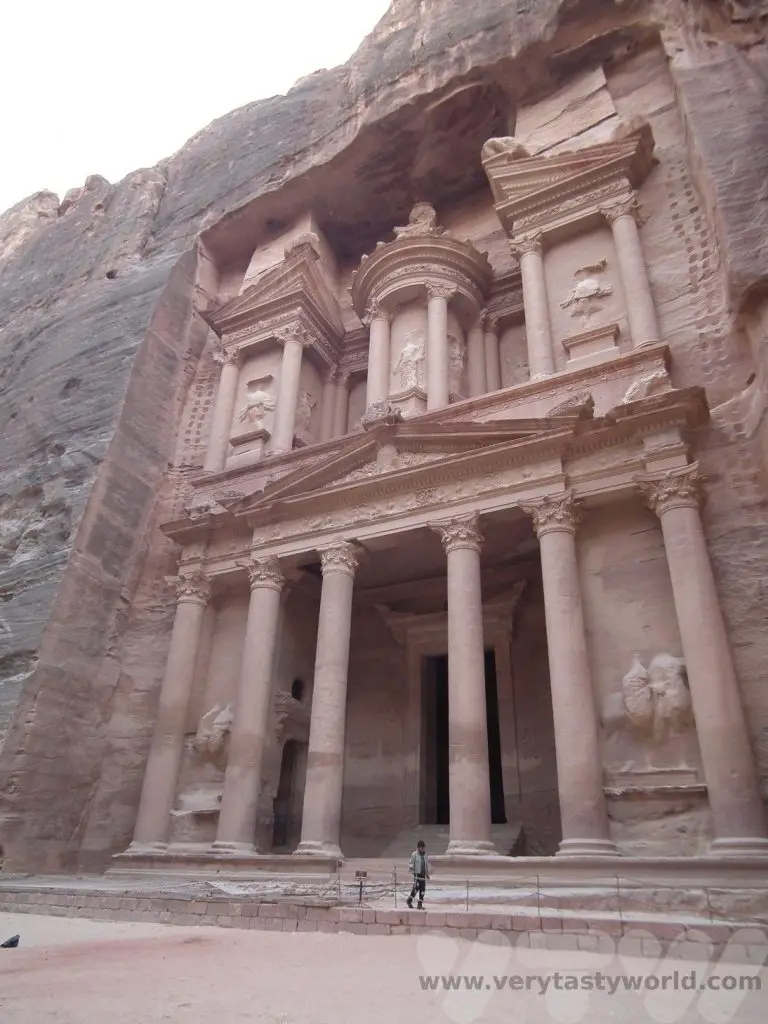
Exploring Petra
The Treasury is just the start of the site. It’s the only place you are not allowed to go inside. Everywhere else is open for exploration. There are no restrictions and no barriers so you need to take care.
From the Treasury you follow the Street of Facades, which has rows of tombs, all intricately carved from the rock.
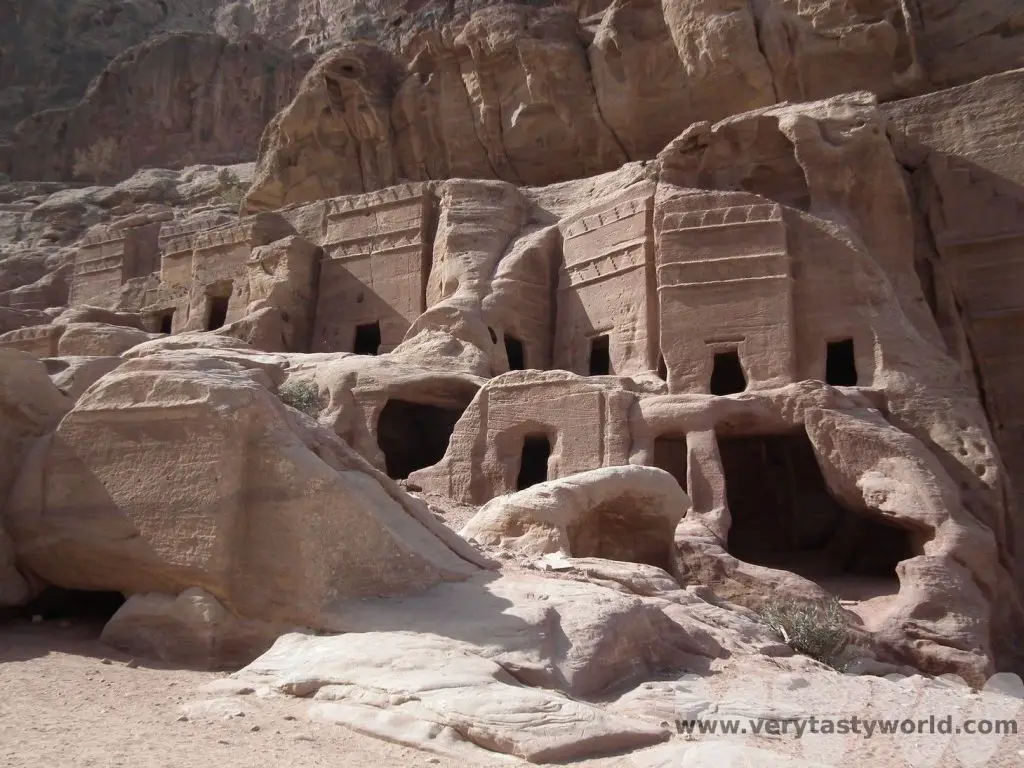
At the end of this street is the amphitheatre, carved into the rock, which appears to have a Roman influence. Its maximum capacity was around 7000 people.
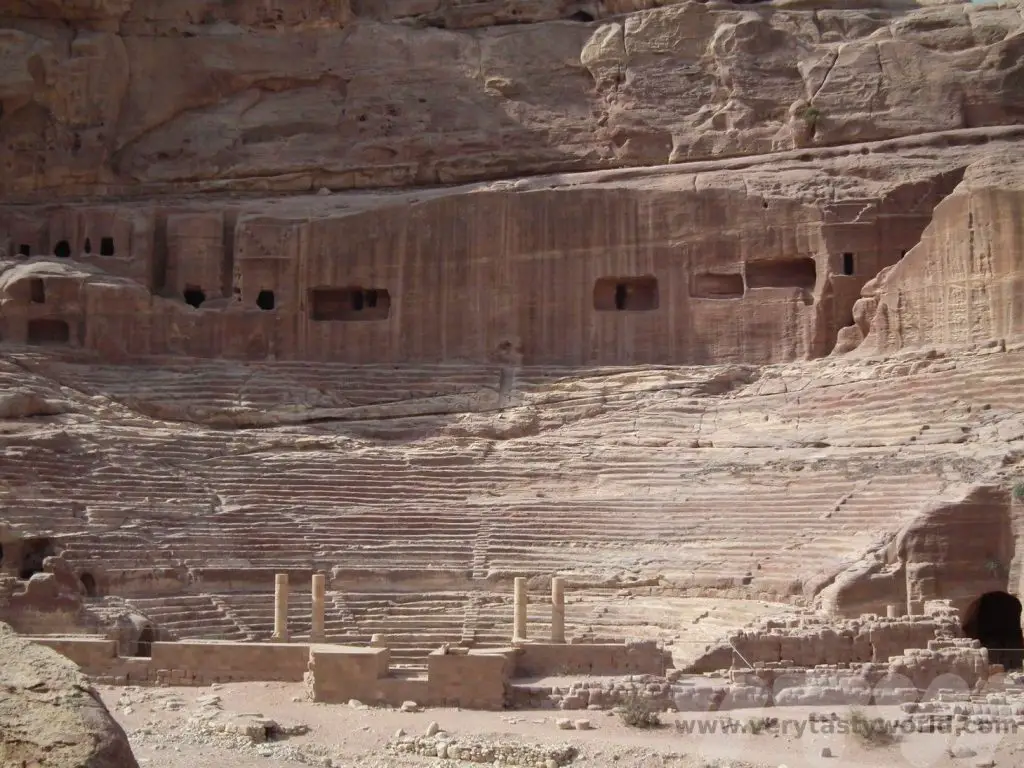
At the end of the street you can see further Nabotean tombs to the right…
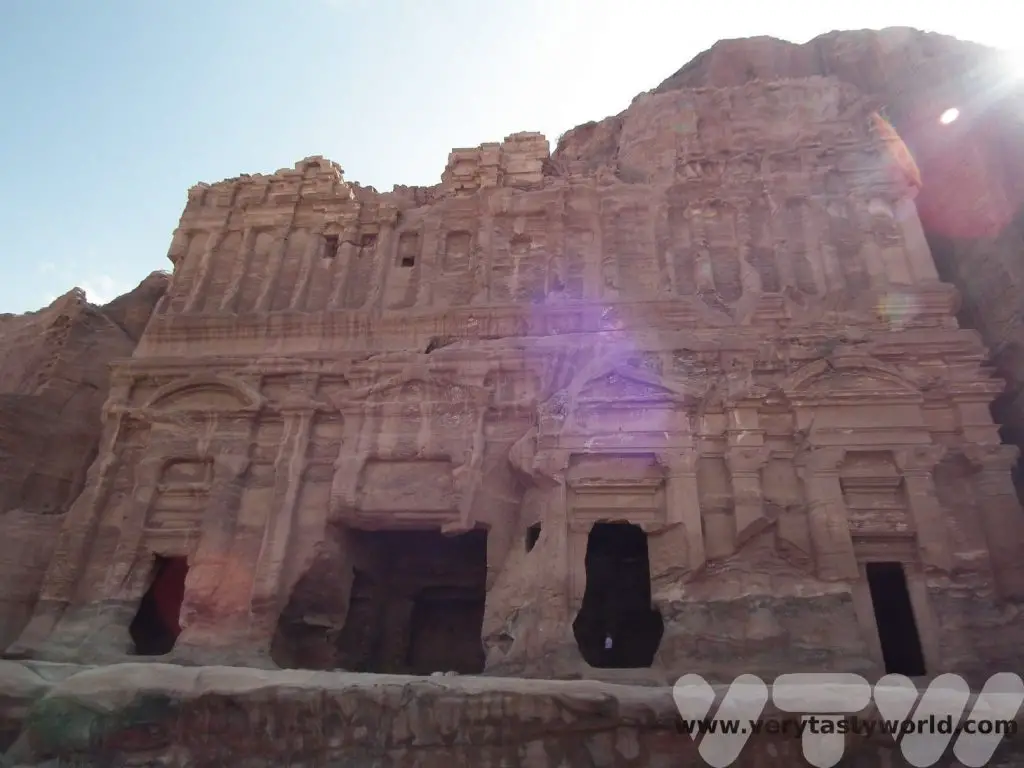
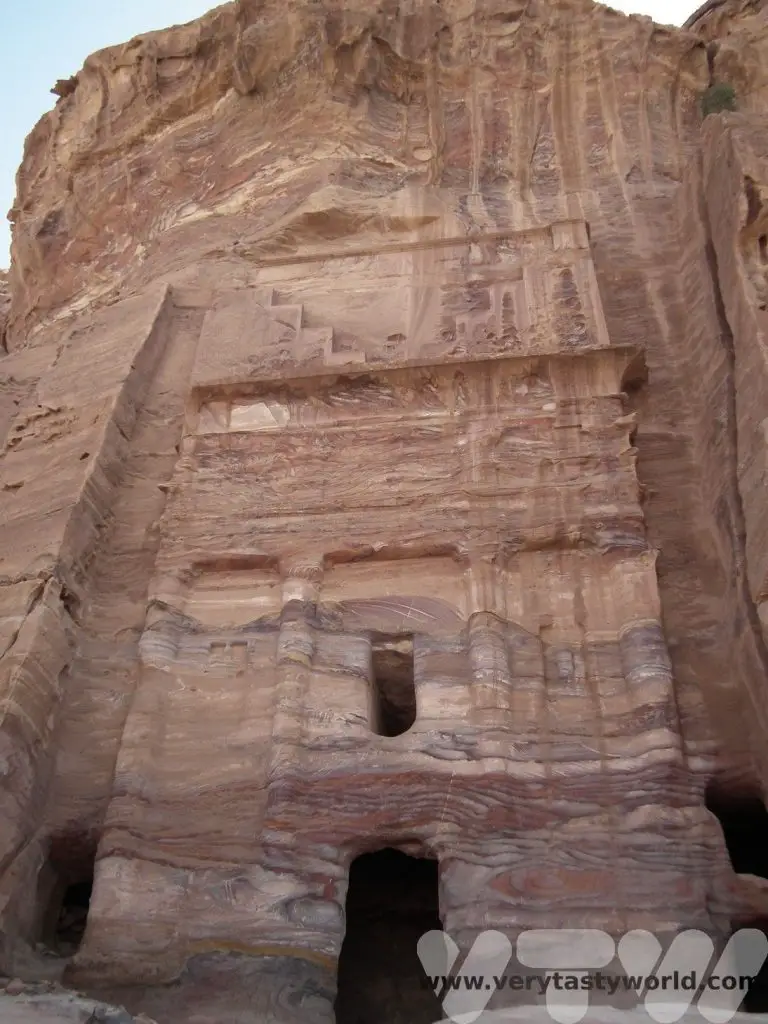
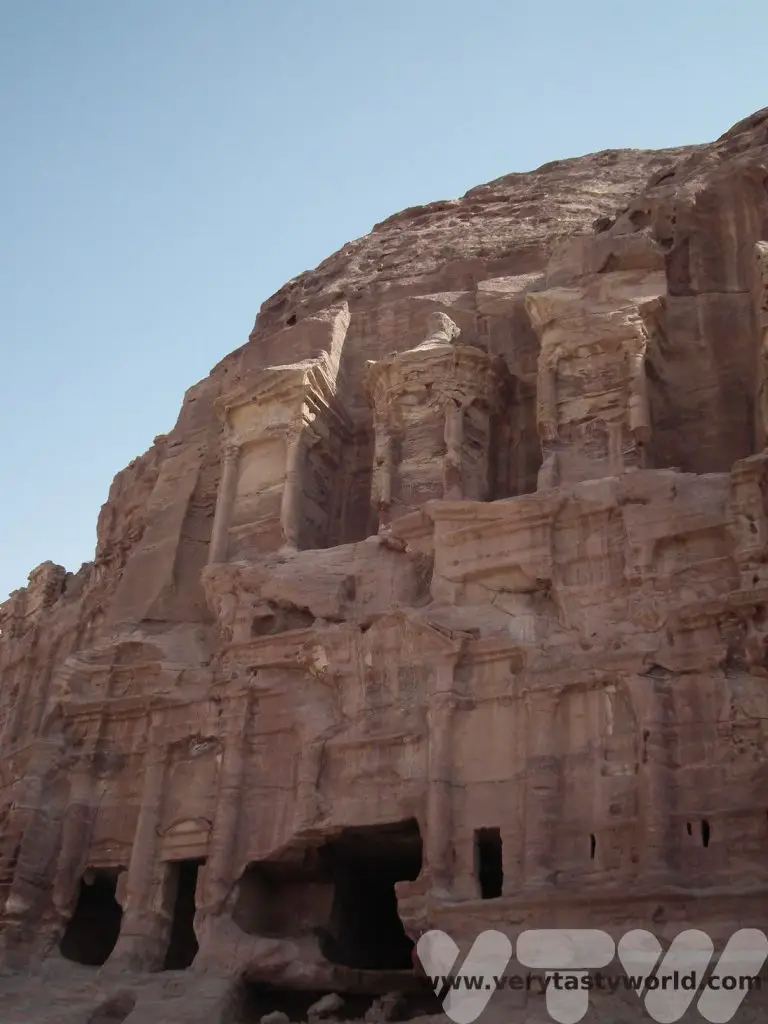
If you make a left turn you will walk along a colonnaded street, with marble pavement much of which is still preserved, which was effectively the city centre. It would have been lined with temples and public buildings.
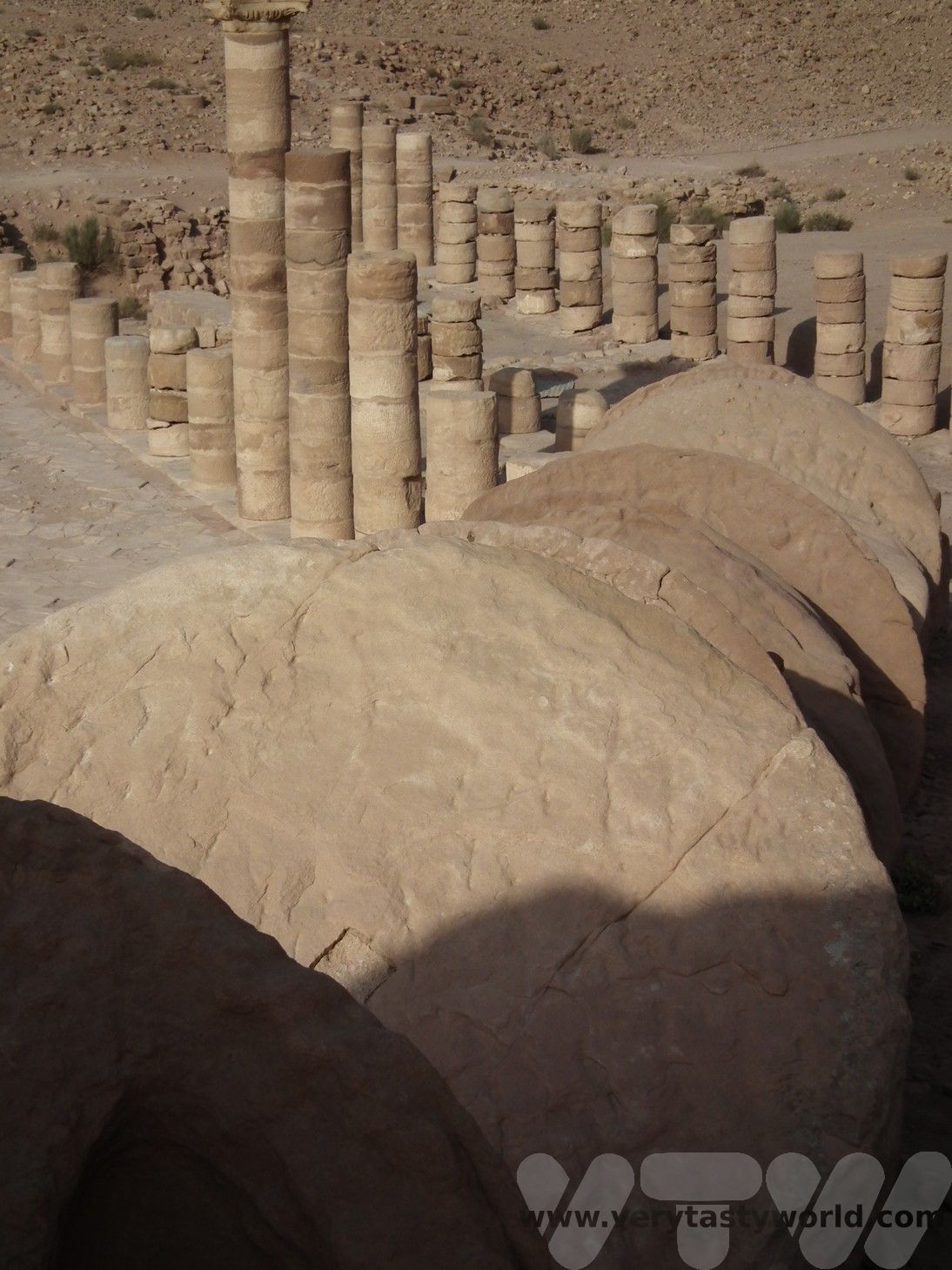
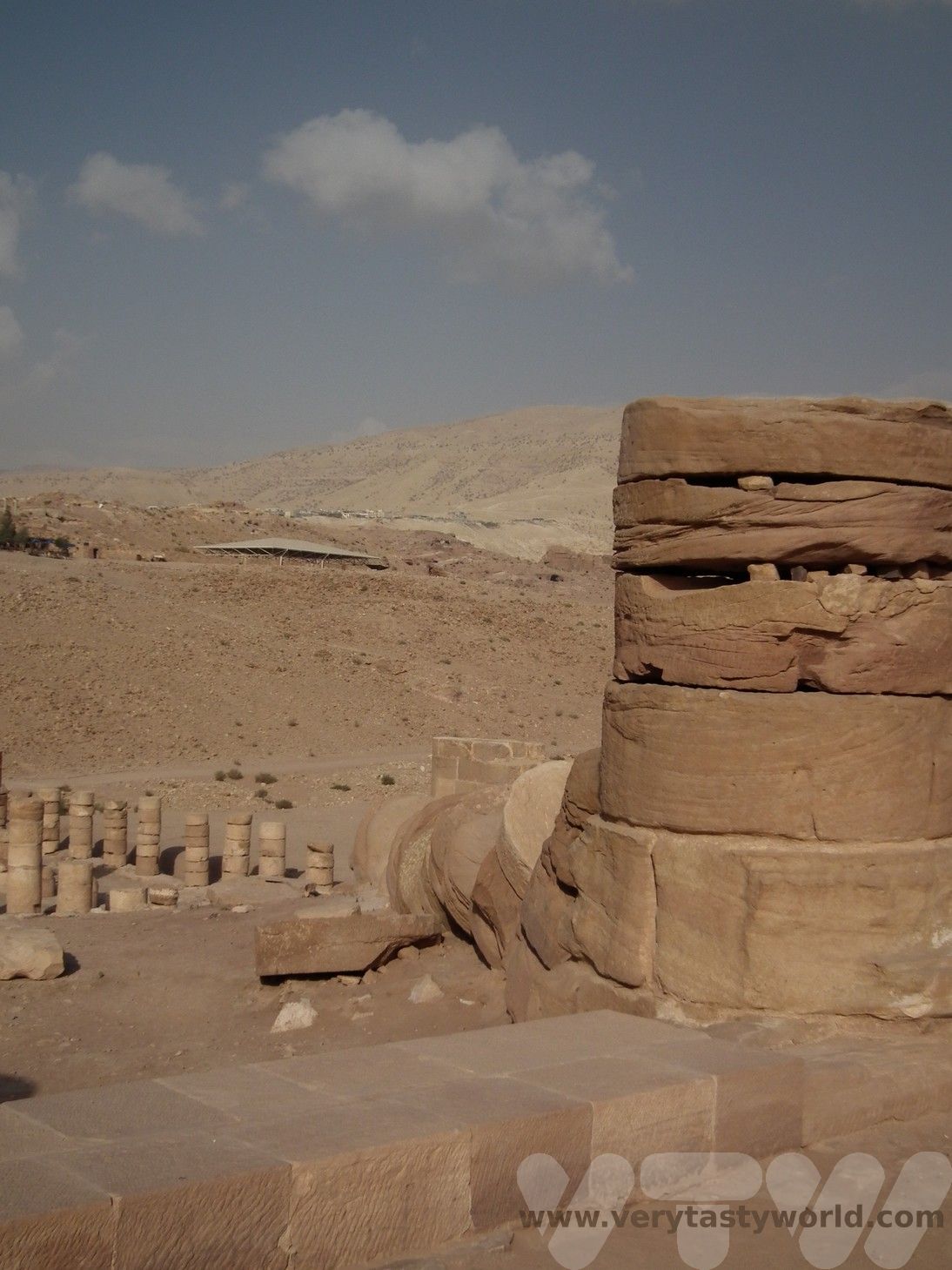
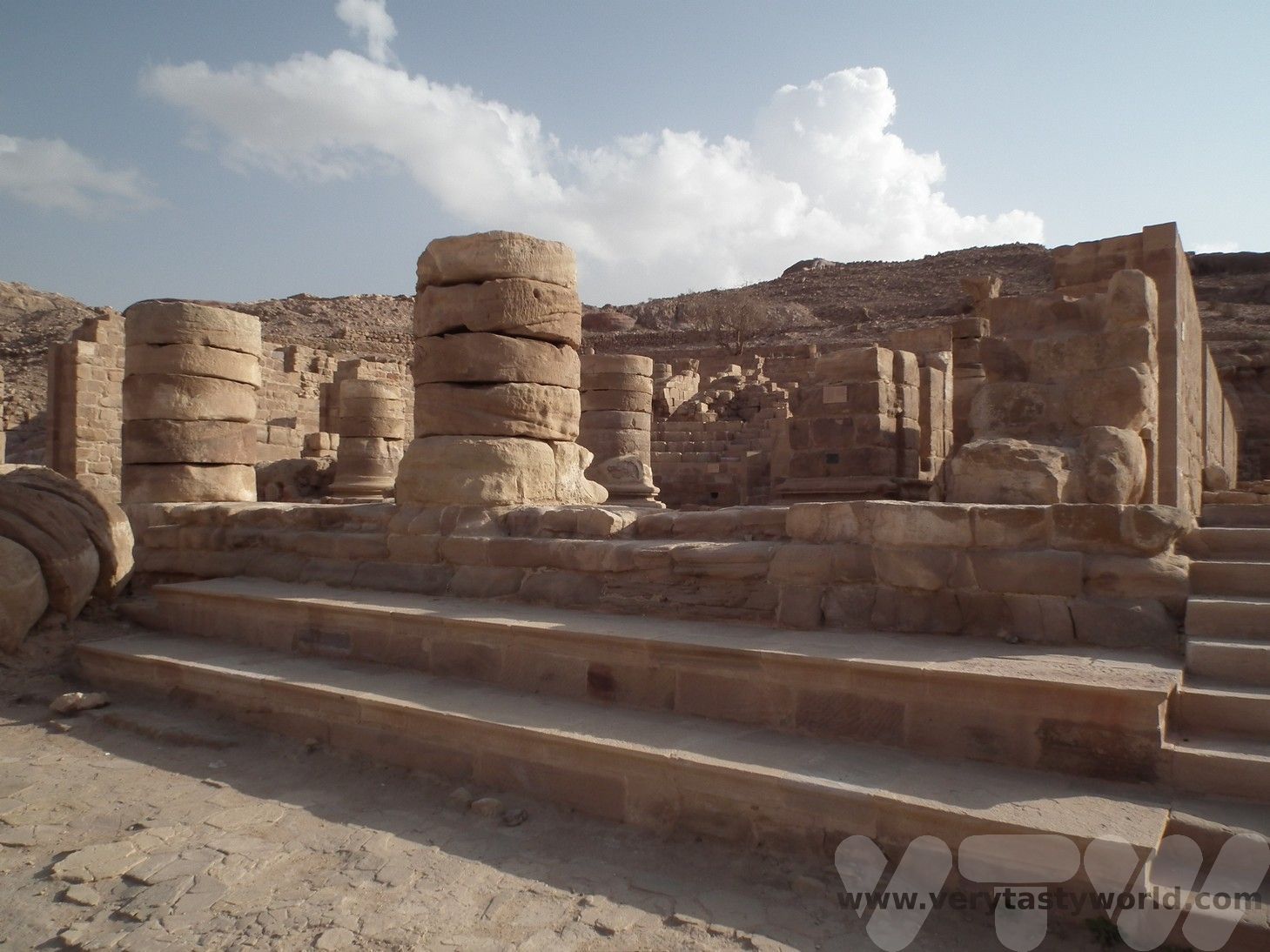
At the end of the street is the route to the Monastery.
The Monastery
We climbed 800 steps to Ad-Deir, The Monastery, which we found to be a moderate walk. It is classed as difficult on the trail guide because some of the steps have worn over the years. We needed to scramble a little on some sections.
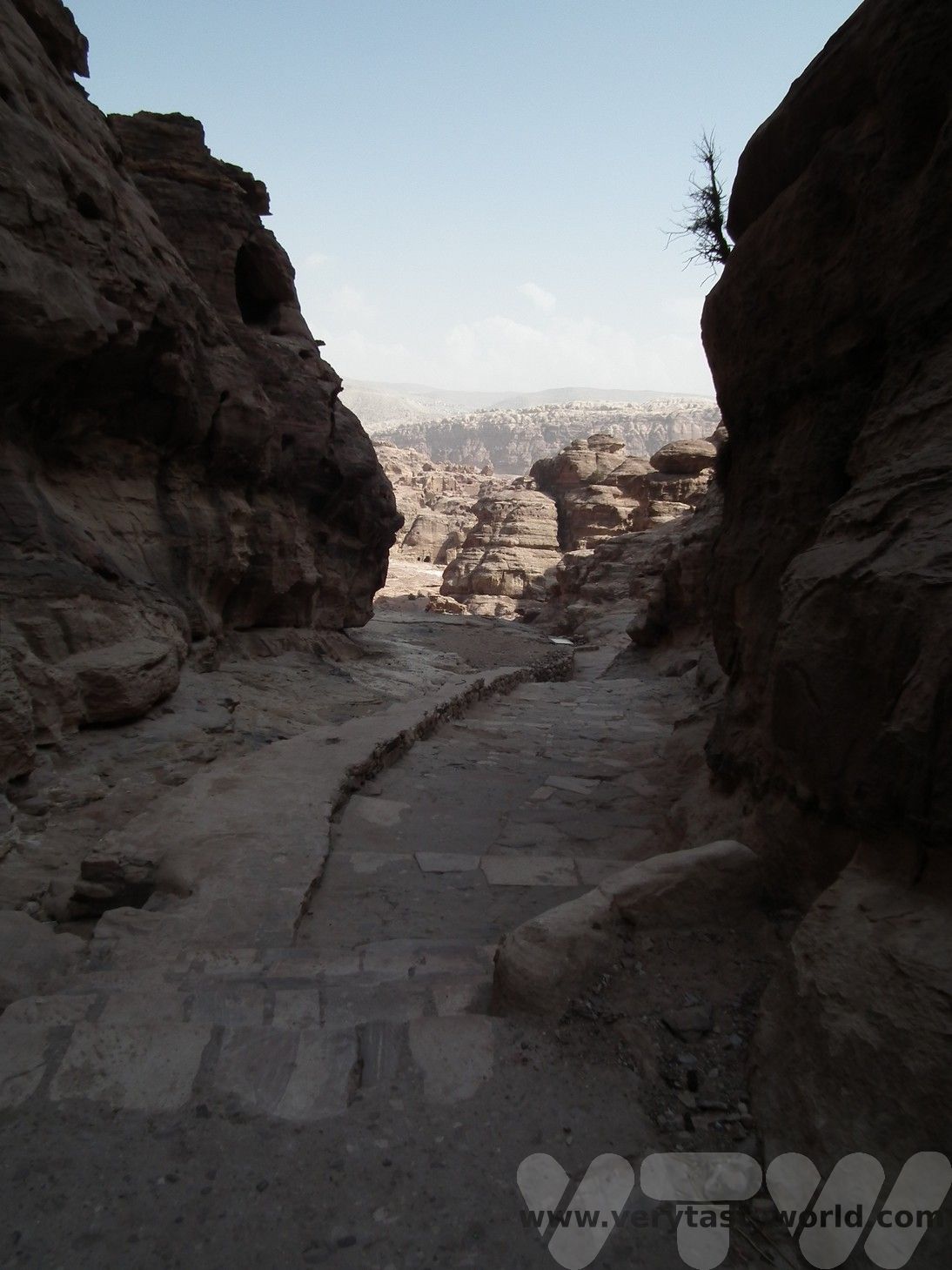
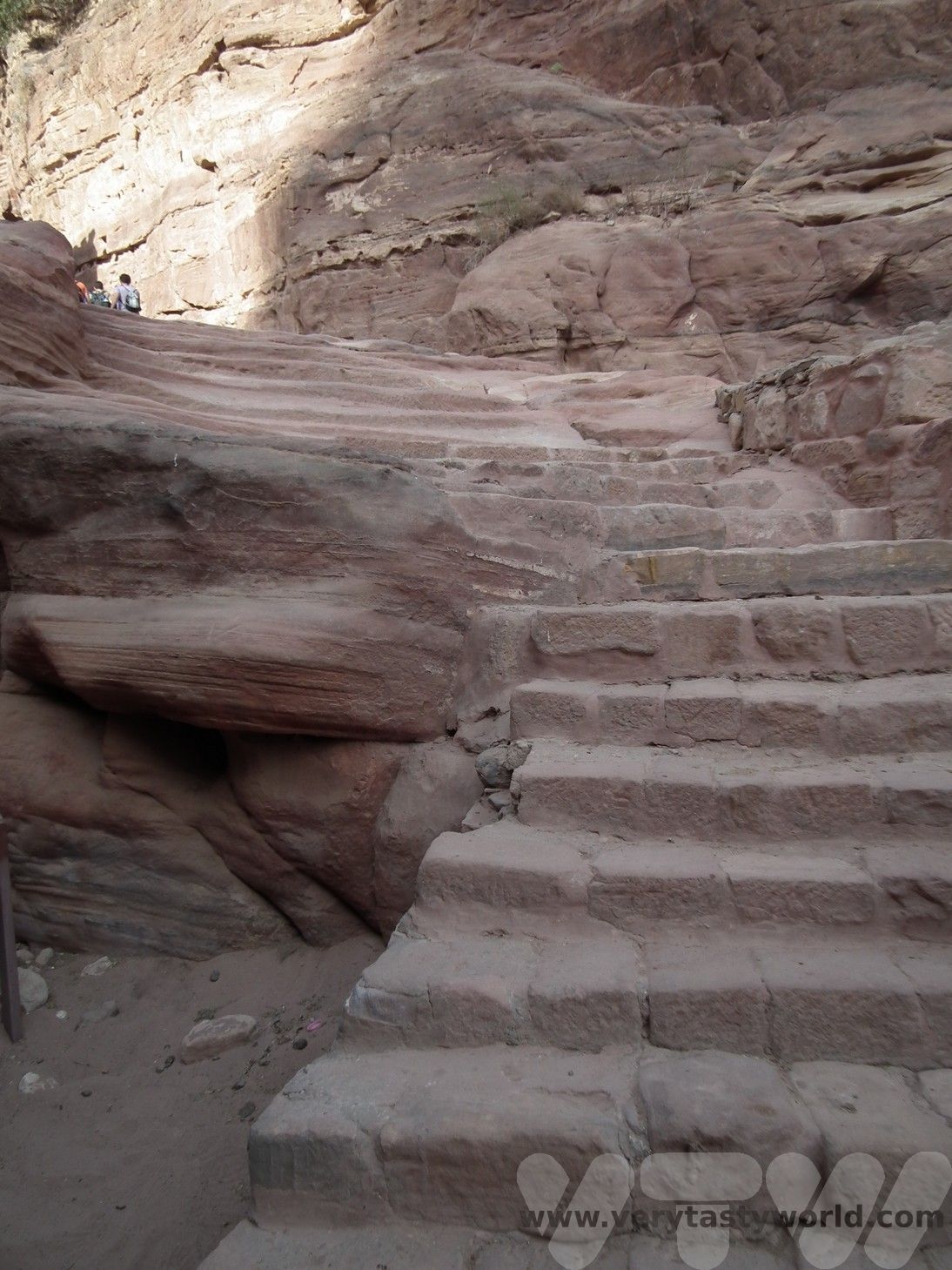
When we arrived we were delighted to discover that the Monastery was as spectacular at the Treasury.
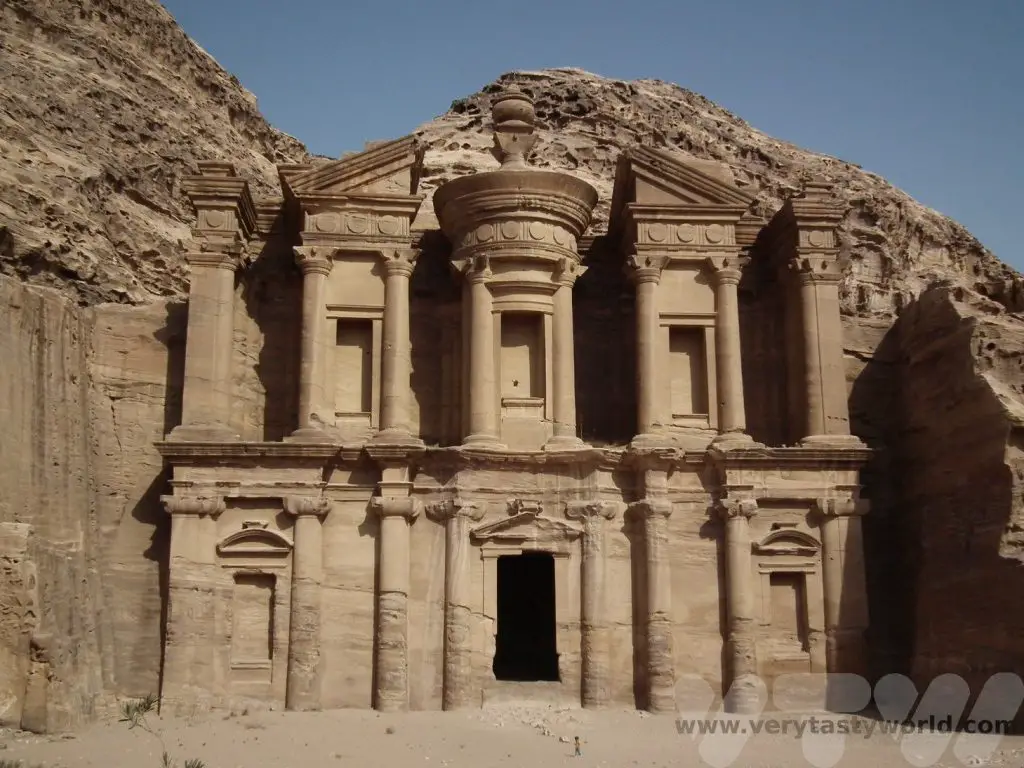
If you look closely at the photo below you can see a man sitting on the building, high up on the central colonnade. We had watched him climb all the way up the adjacent cliff face and then onto the building itself, leaping across the colonnades with absolute confidence – an amazing form of parkour. It was utterly terrifying watching him.
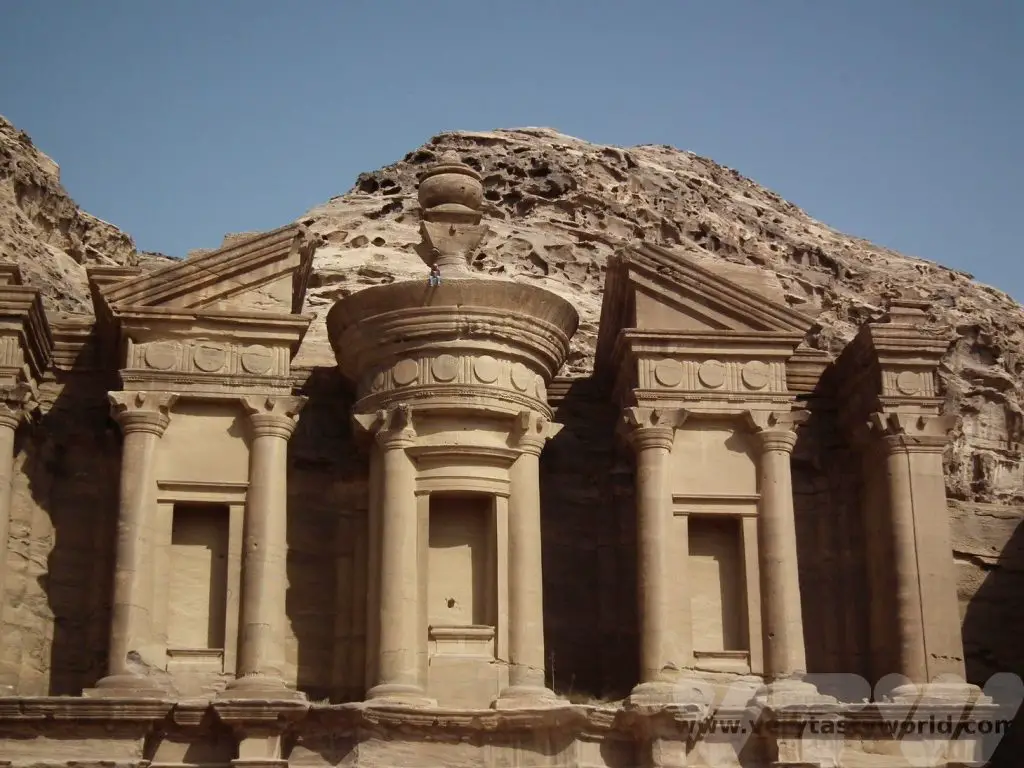
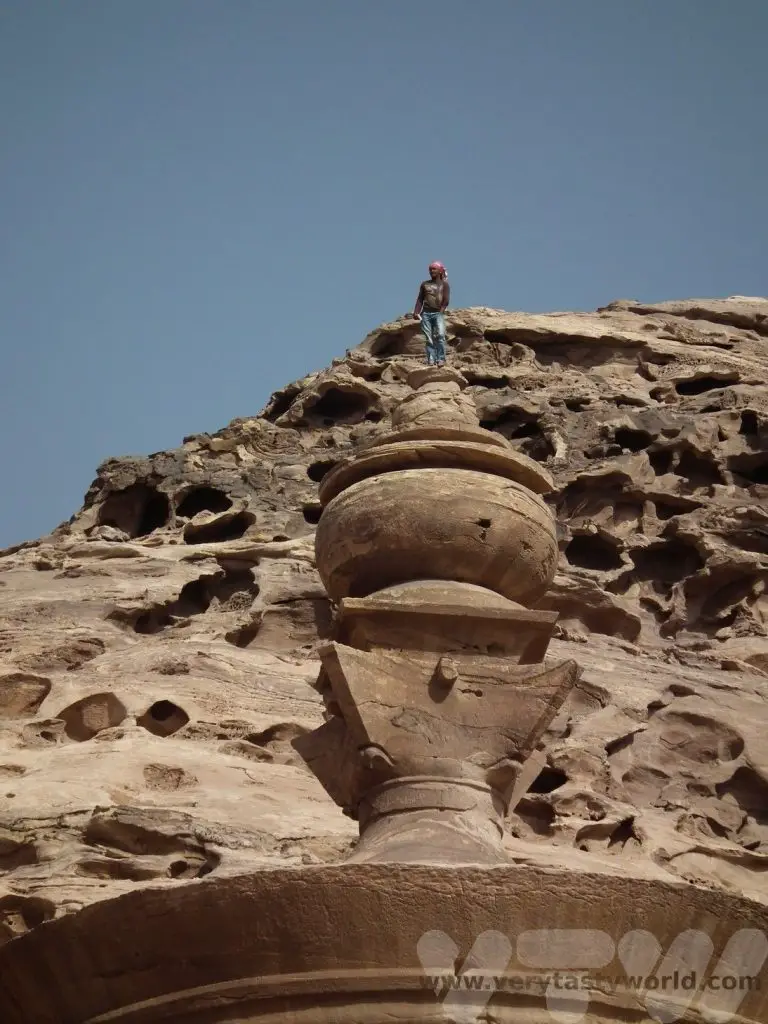
Exploring The Trails At Petra
There are numerous trails you can follow, some of which involve pretty tough climbs where the stairs have been eroded. The guide indicates the options available and the trails are well marked with brown signs.
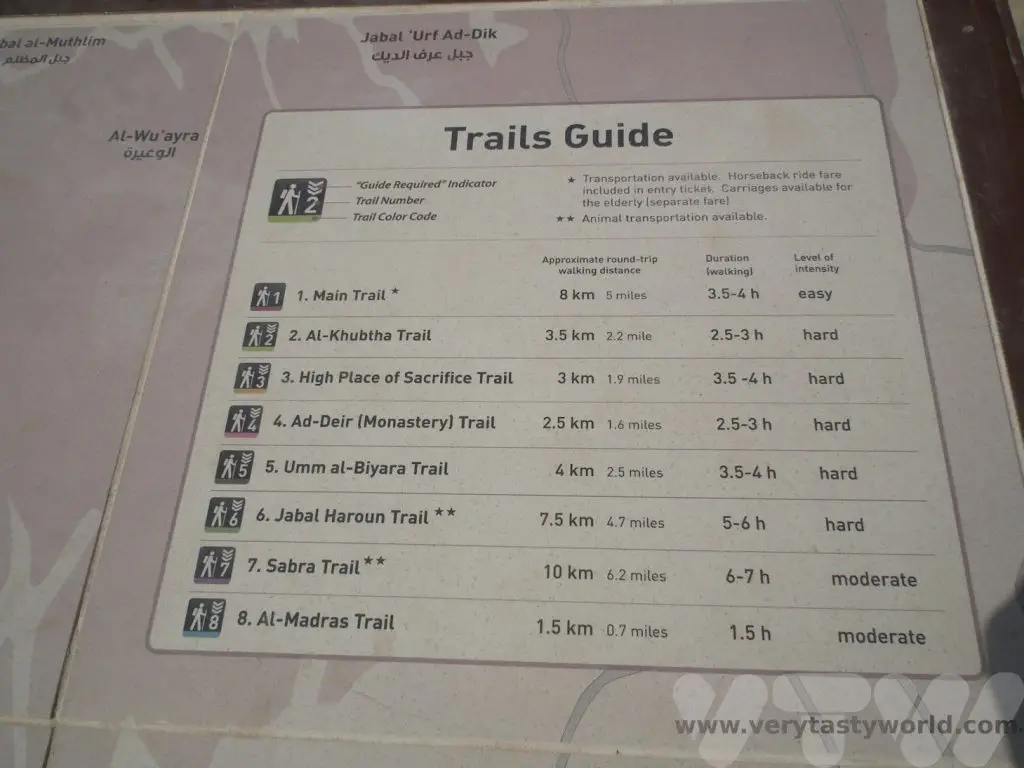
The other walk we did was the Al Khubtha trail, a climb to view The Treasury from above. We met a woman who was on her way down who said she had counted the number of steps, and sadly we can’t quite remember what her count was, but it was several hundred. The view was fantastic when we reached the summit.
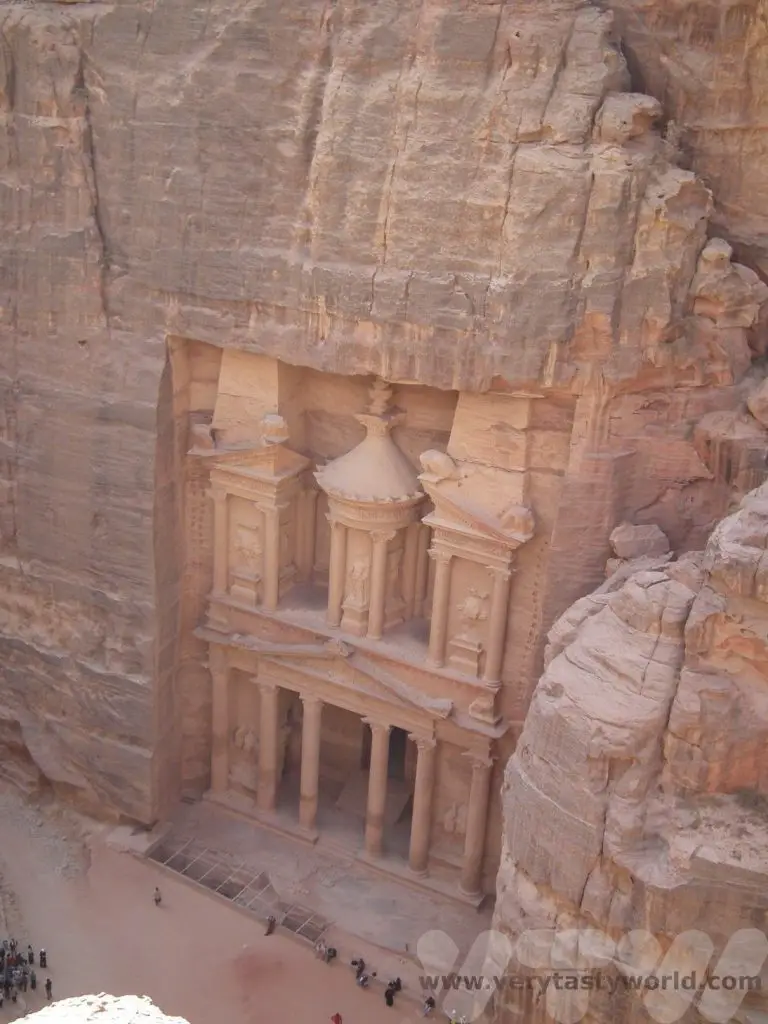
We also really loved the colours of the rock as we explored the various tombs. The white is silica, the red is iron oxide and the yellow, sandstone.
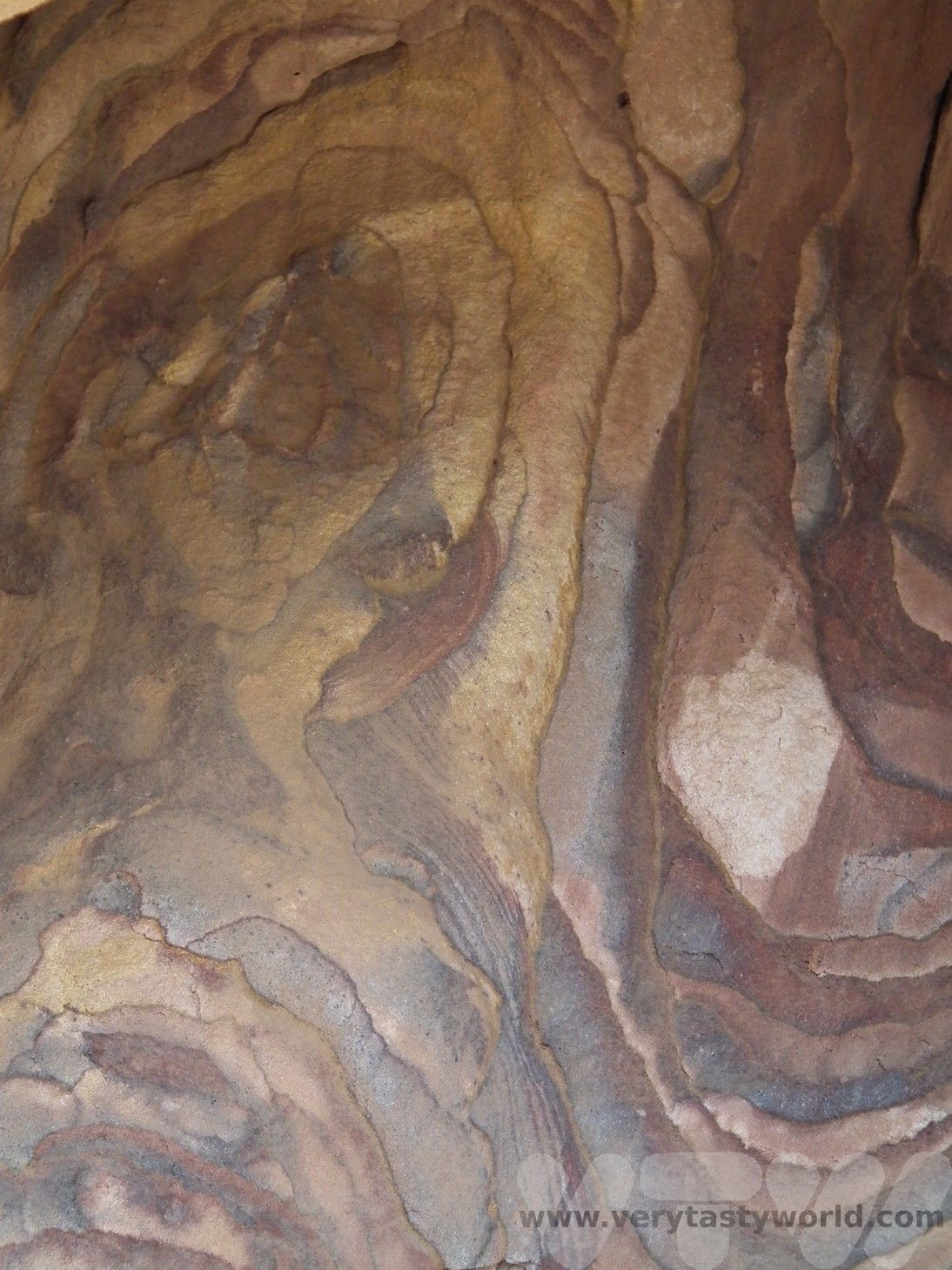
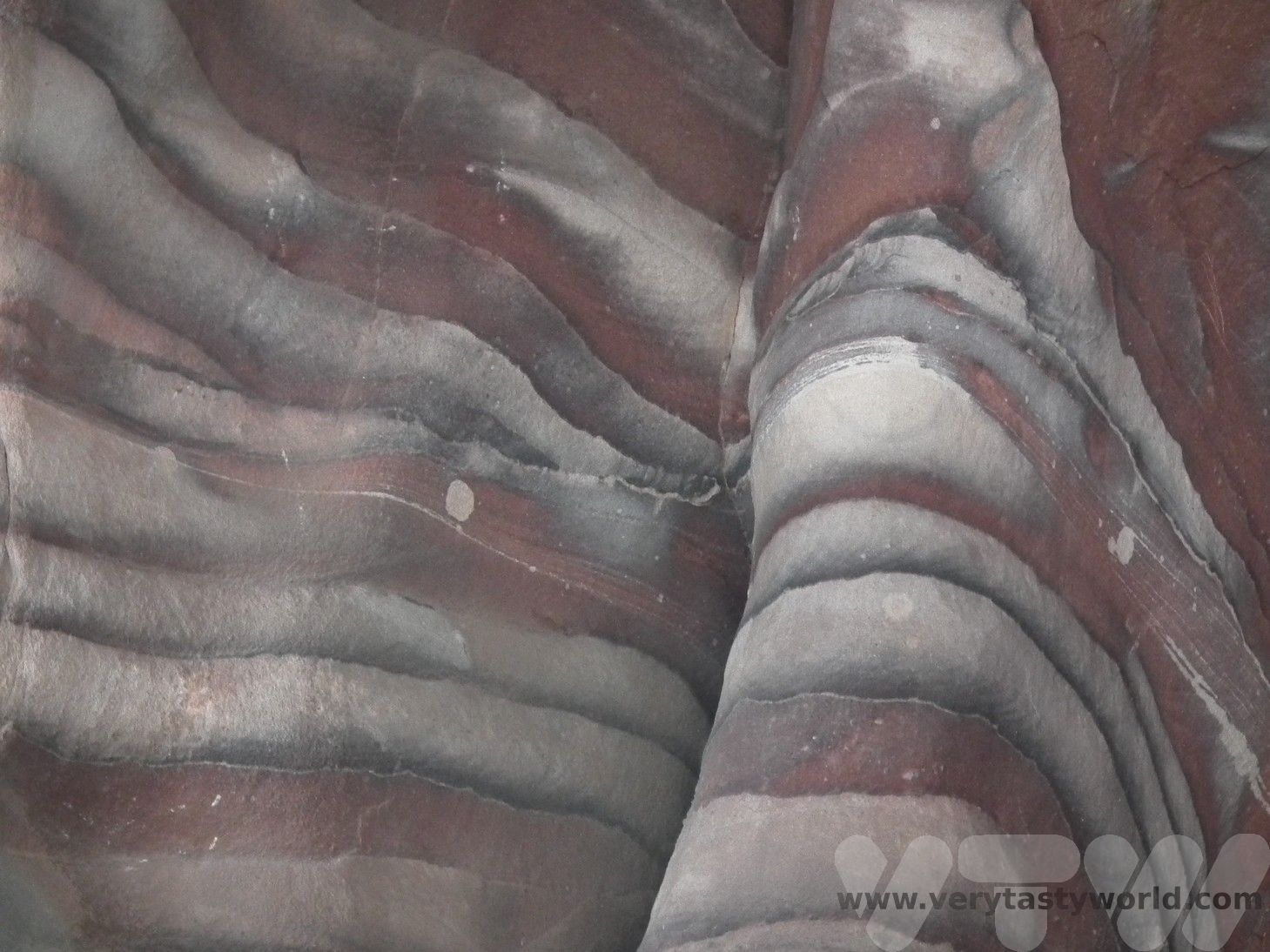
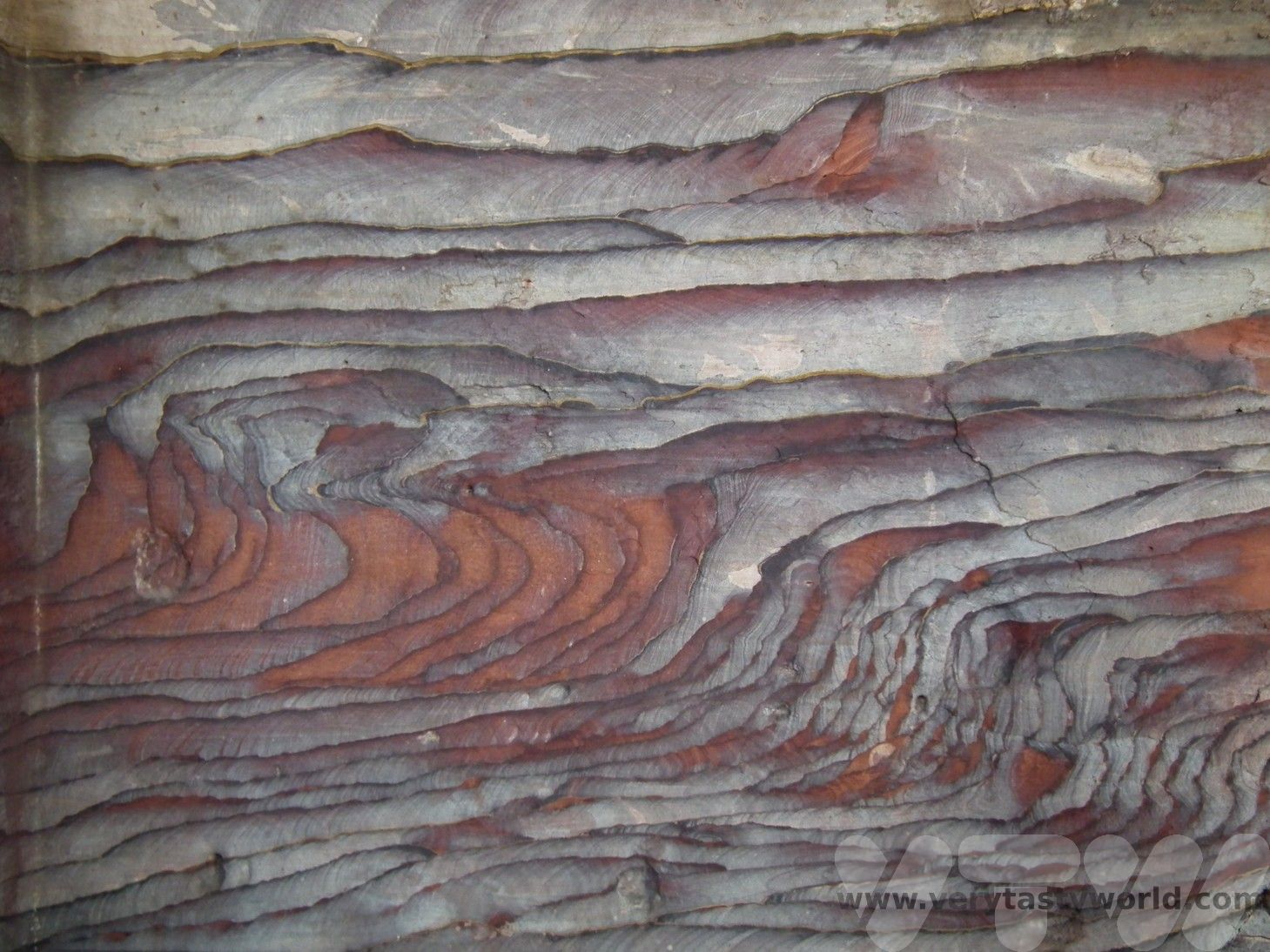
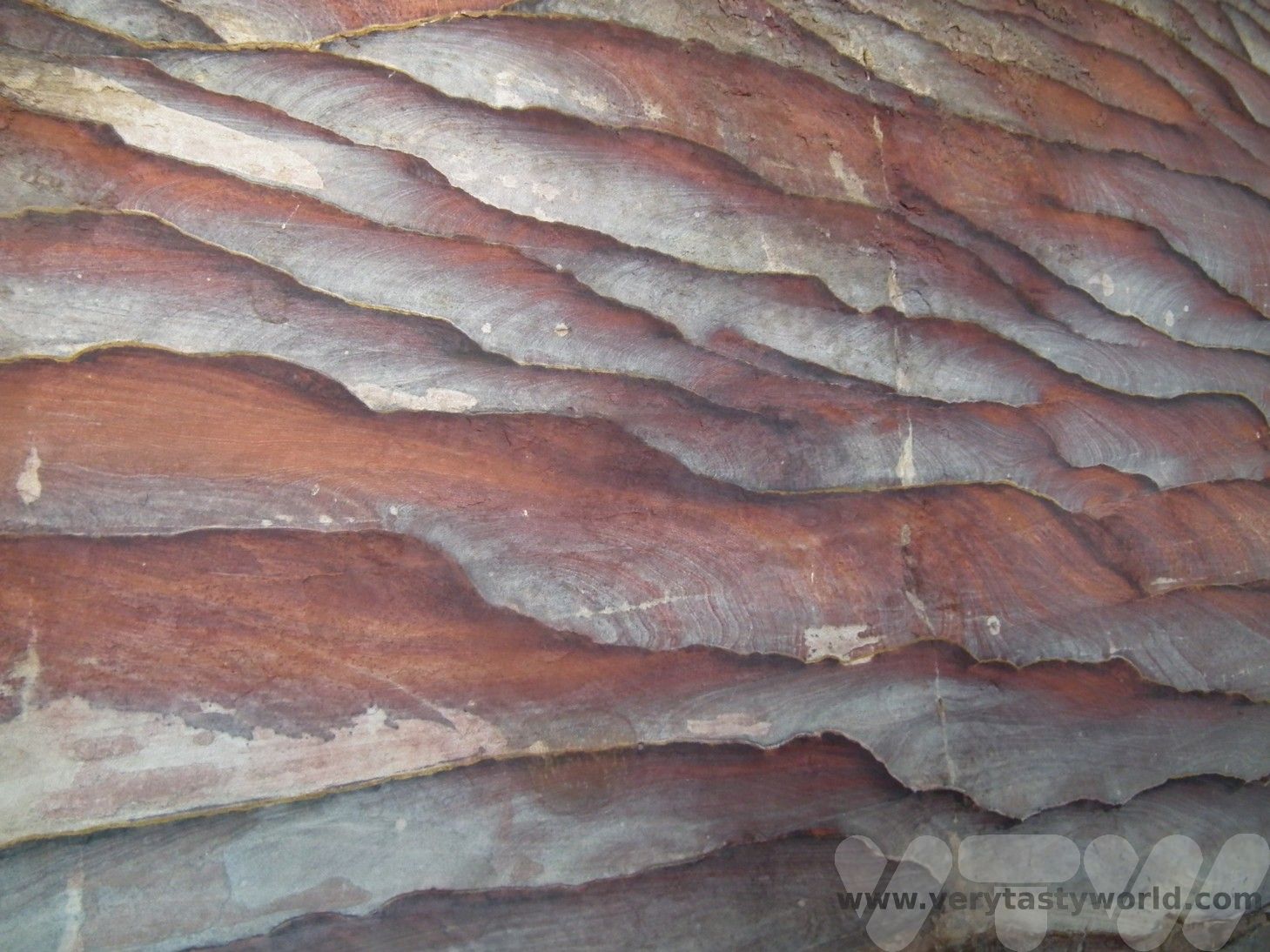
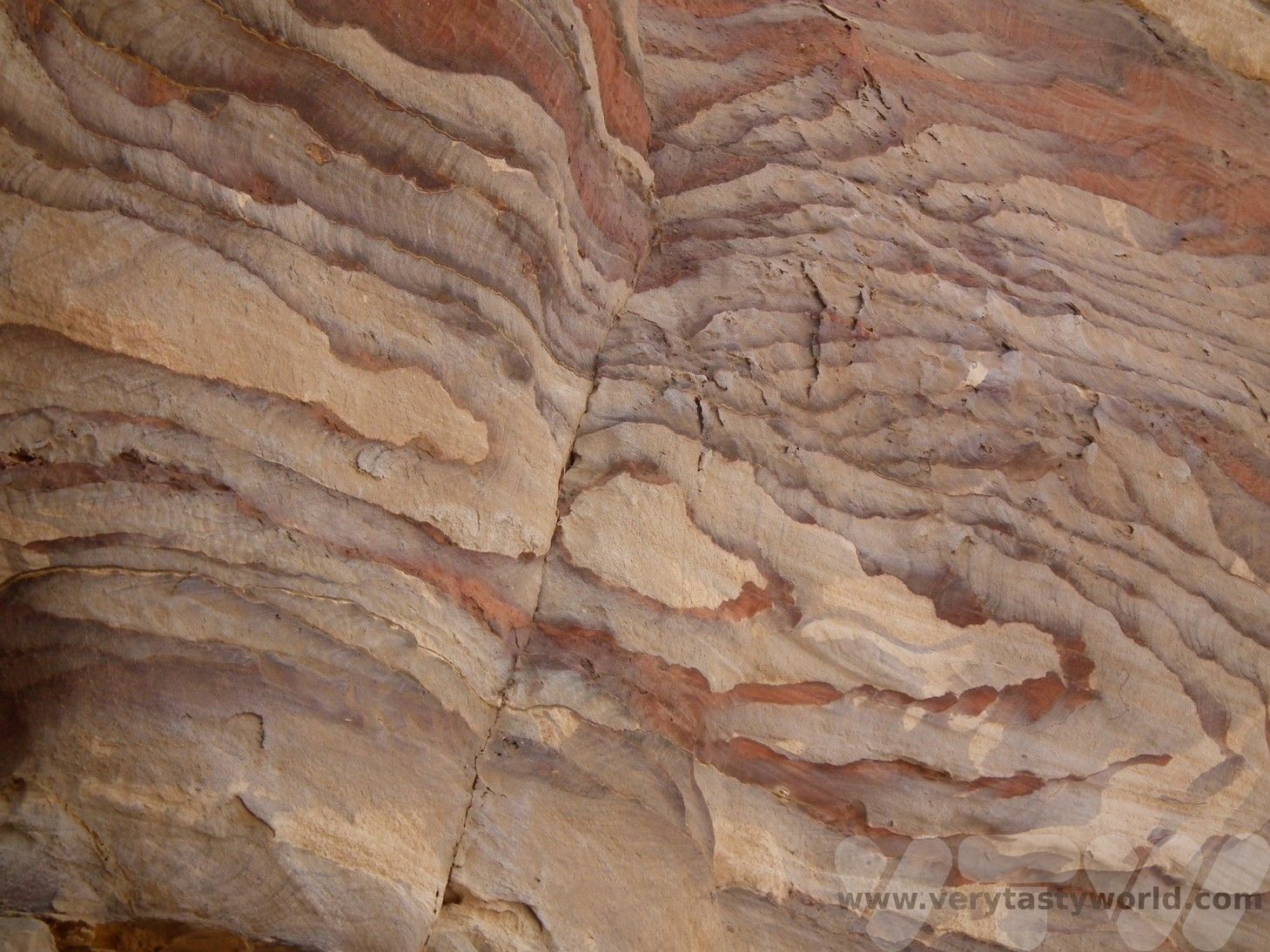
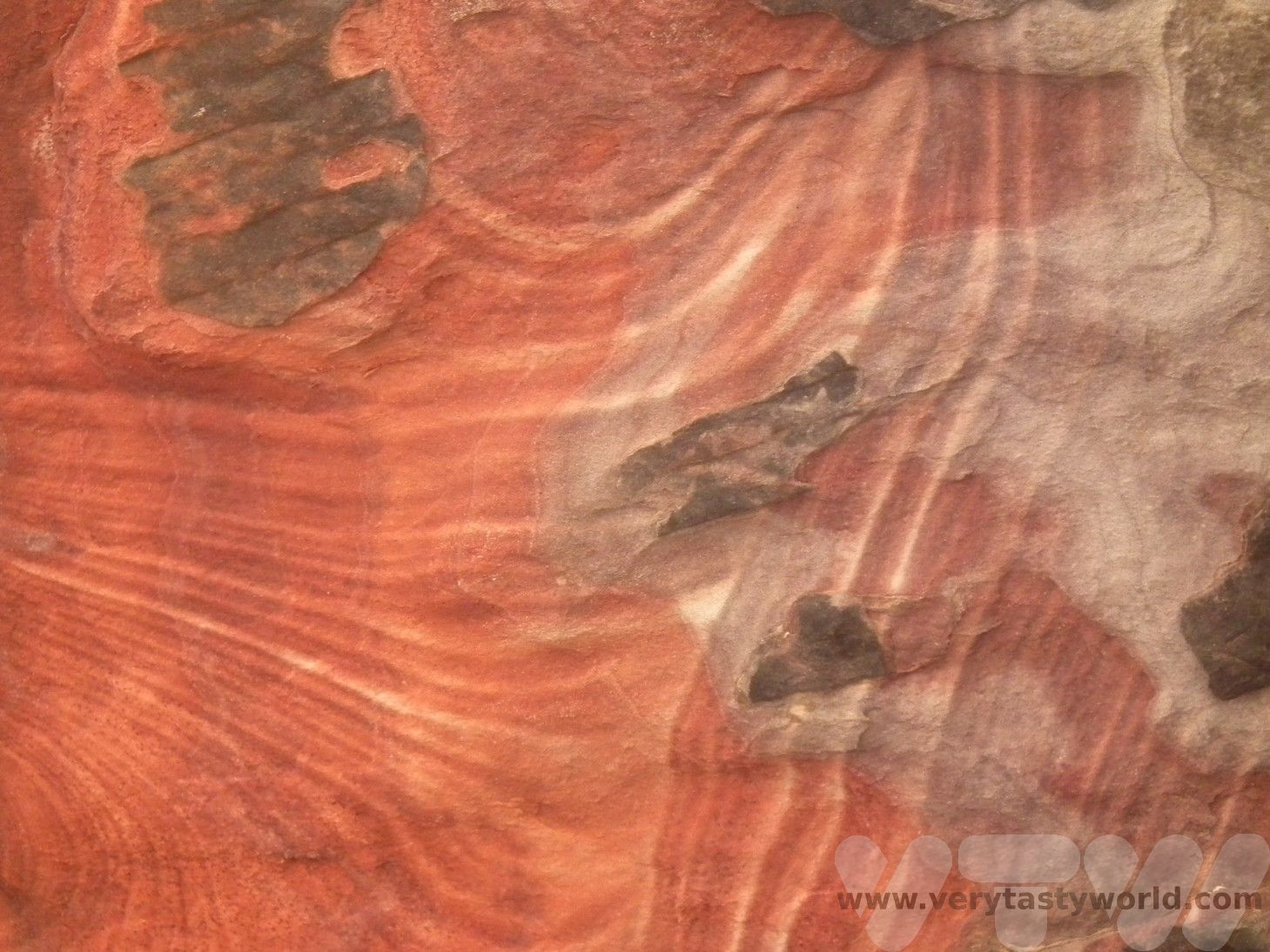
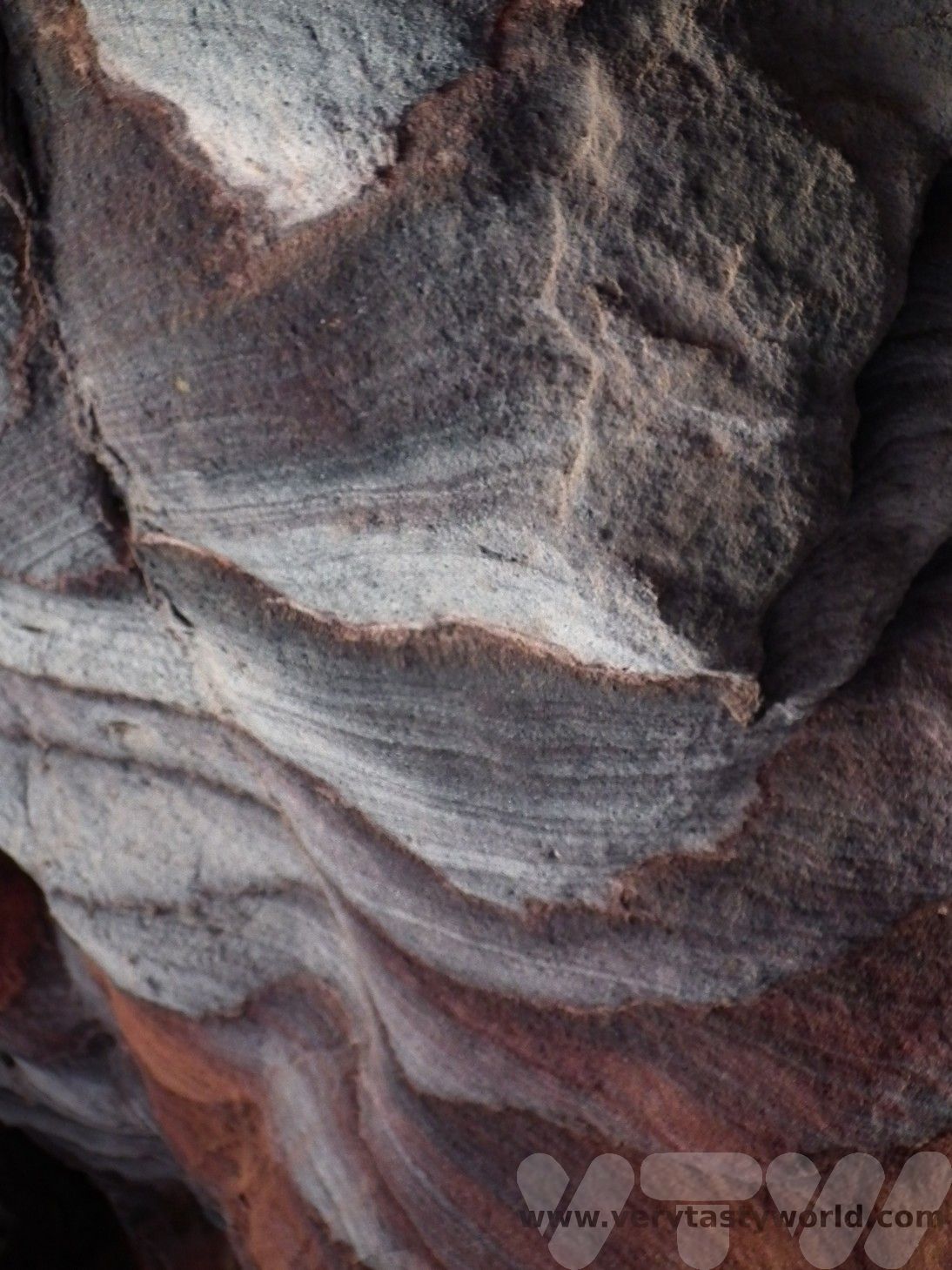
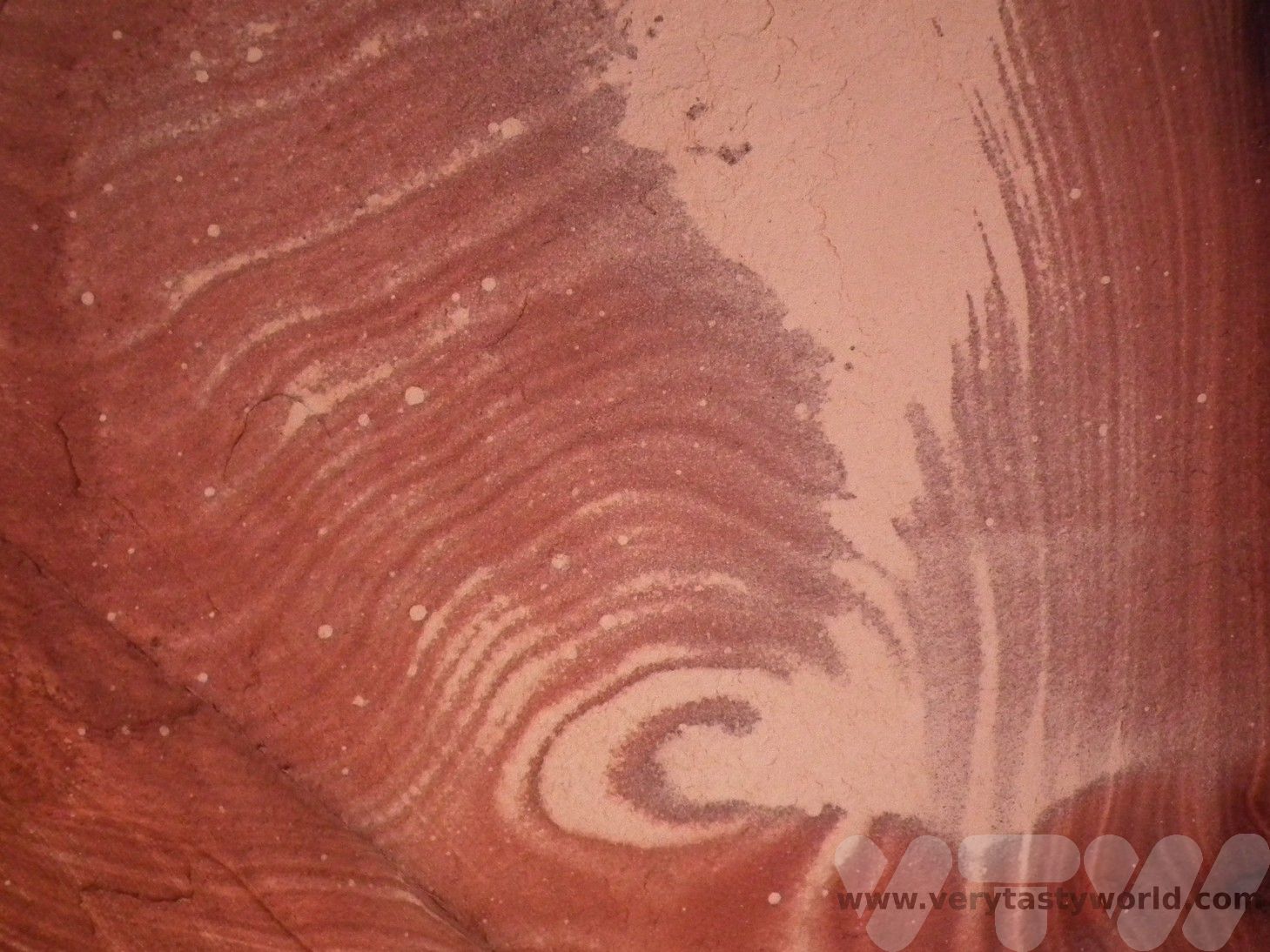
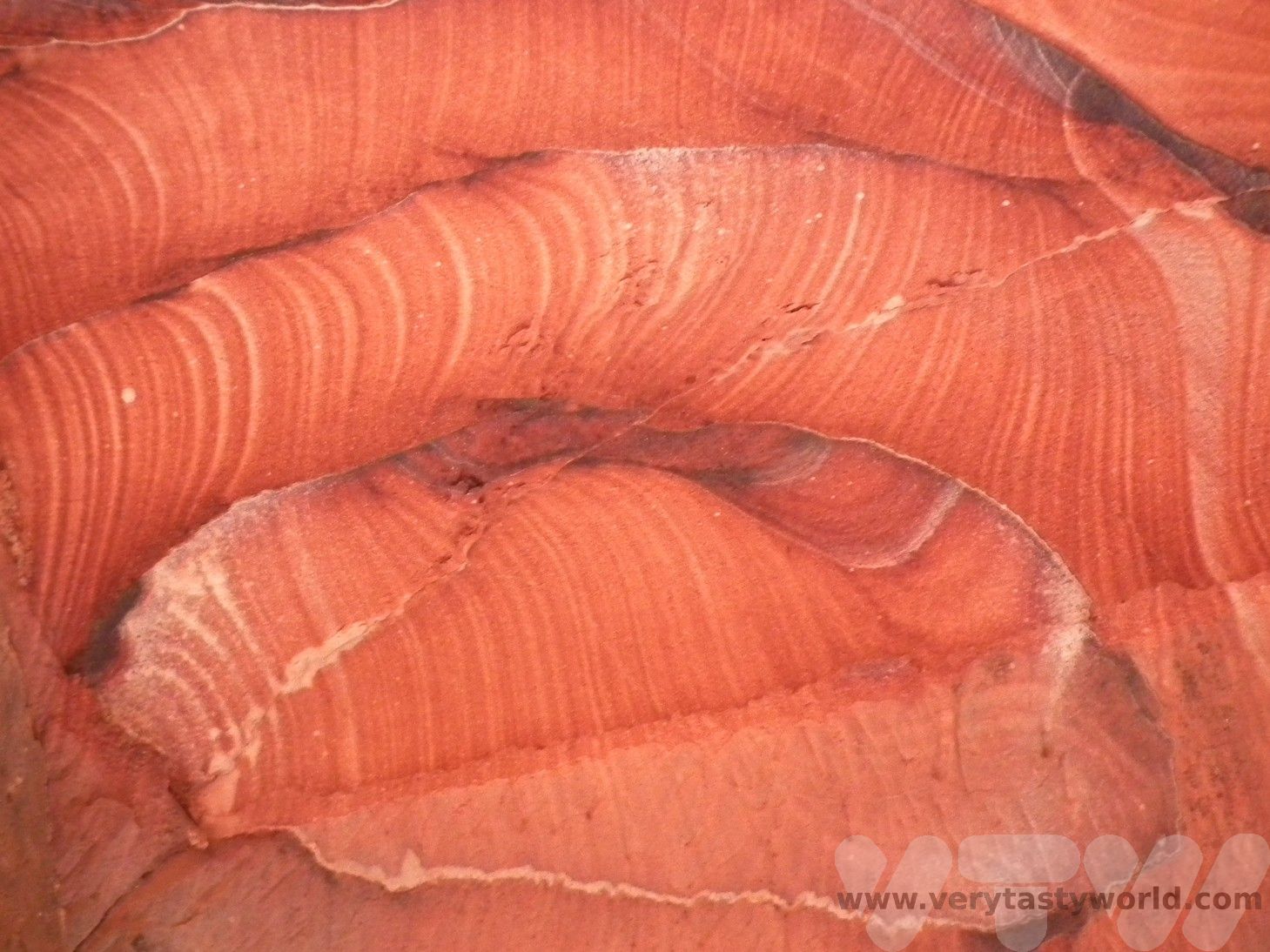
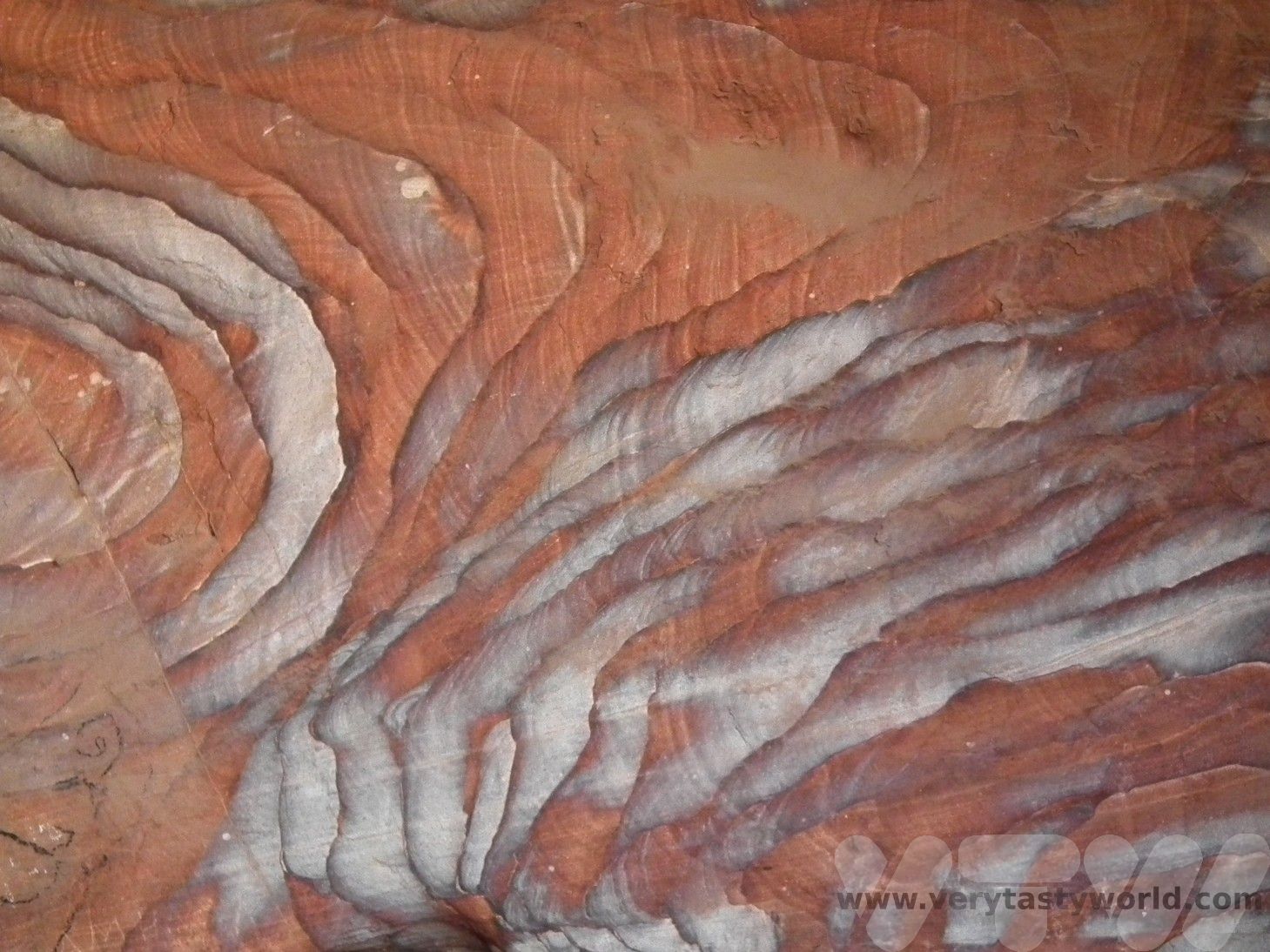
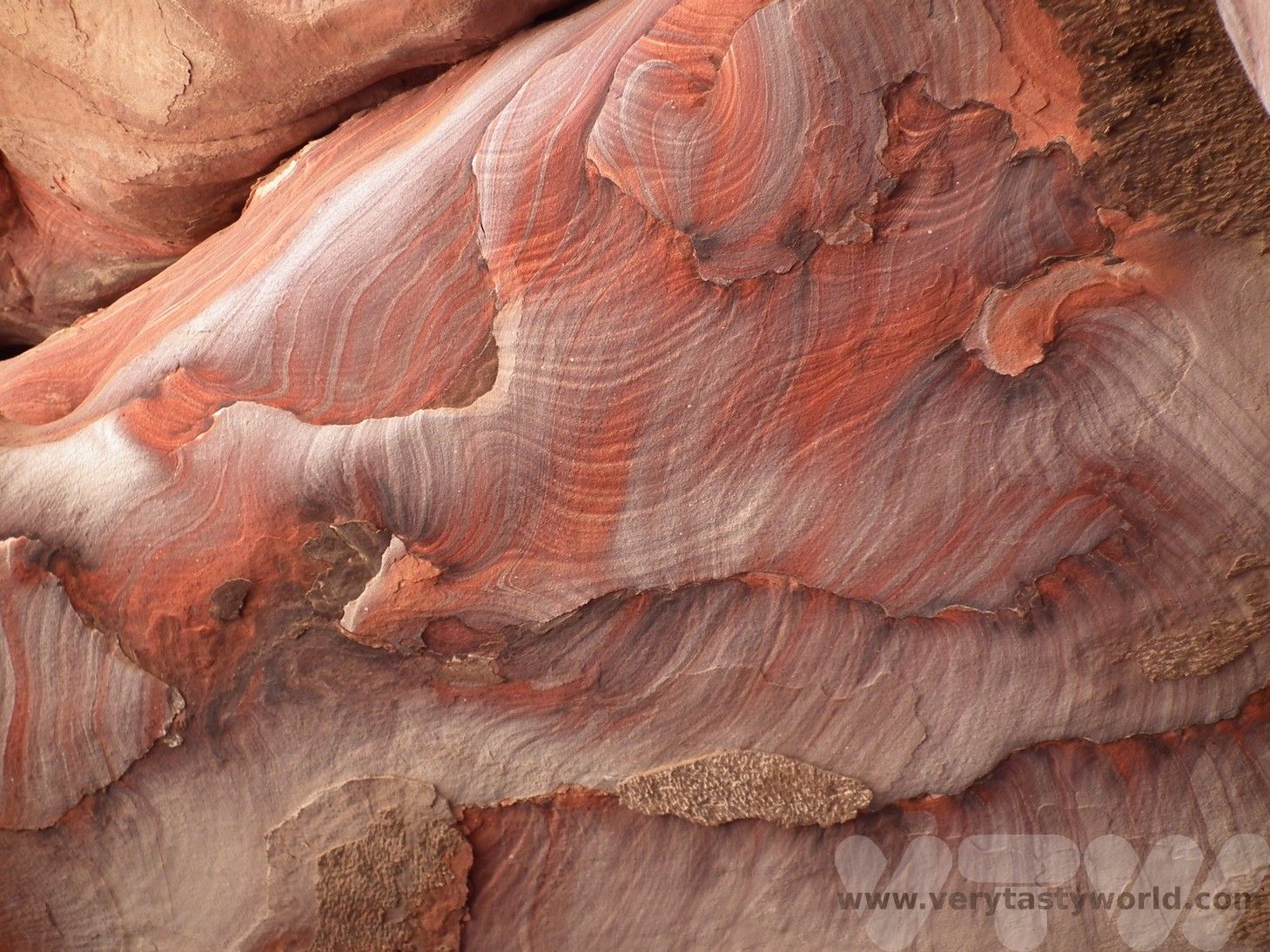
It is possible to see a night-time sound and light show at the Treasury. Walking through the Siq in the dark to see the Treasury lit up by lanterns is an ethereal sight.
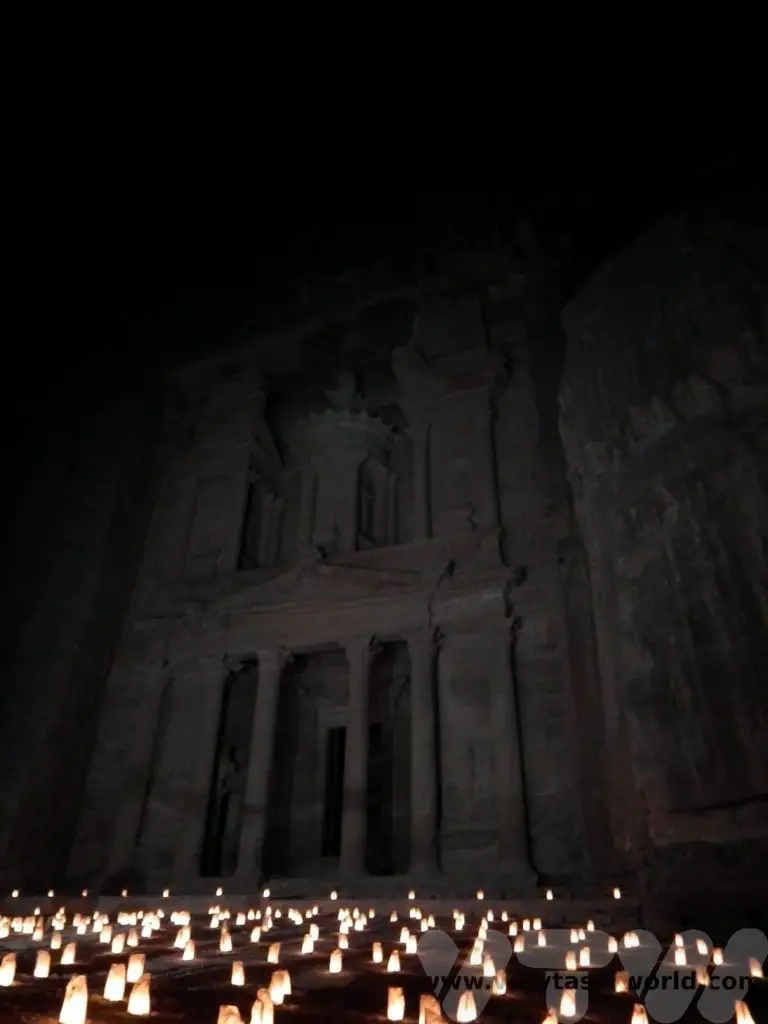
Practicalities To Visiting Petra In Jordan
There are restrooms on site at either end of the colonnaded street and nearby cafes which offer refreshments. We recommend the lemon juice with mint – it’s refreshing and delicious.
It’s advisable to wear a sunhat and use sun protection if you are exploring the walking trails as there is no shelter from the sun. Good walking shoes are advisable. Make sure you carry water with you. Use the bins provided to dispose of rubbish.
Keep on the trails. You may meet local people as you walk – we ended up chatting with some people on the Al Khubtha trail and were invited to enjoy a cup of tea with them. (We weren’t asked for money but we did offer a contribution towards the tea.)
After Your Visit To Petra – A Foodie Evening At The Petra Kitchen
After a full day’s exploring we were pretty tired and there’s not a lot to do at Wadi Musa. But we did manage to join a cookery course at the Petra Kitchen on one of the evenings. One of the chefs was the uncle of the guide who showed us around the site. We learned to make Jordanian food and then eat it – a fine way to spend an evening. We made Shourbat Adas (lentil soup), Baba Ganoush, Fatoush, Tabbouleh, Tahina salad, Galayet Bandora, Araies Iahma (Bedouin pizza – pittas stuffed with minced meat and covered with Galayet Bandora) as a mezza. The main course was Maqluba, an upside-down hotpot, which was scrummy. Sadly, we were too busy cooking – and eating – to take photos! But we do plan to cook the recipes at home and will no doubt blog about them in the future.
Related Posts You May Enjoy

